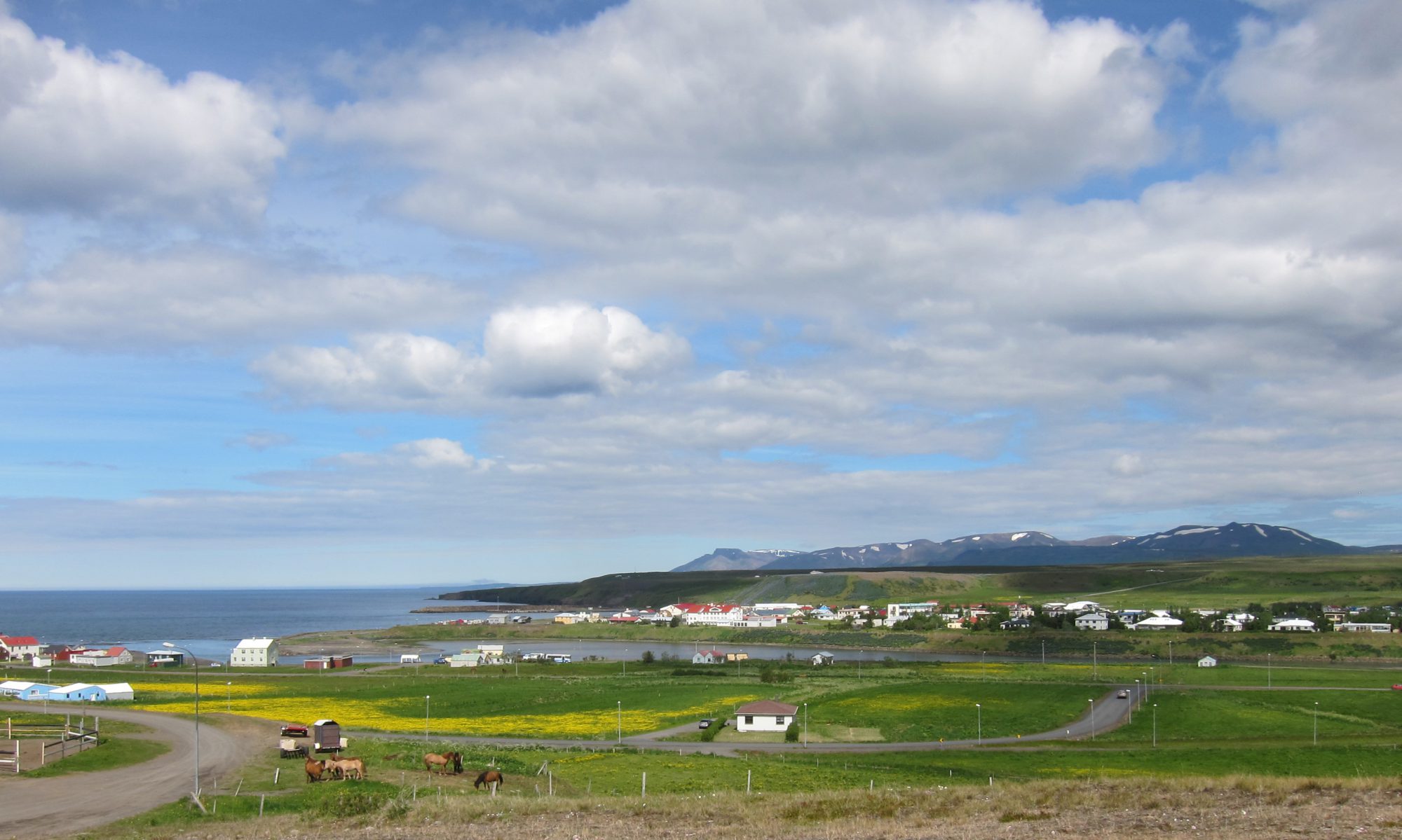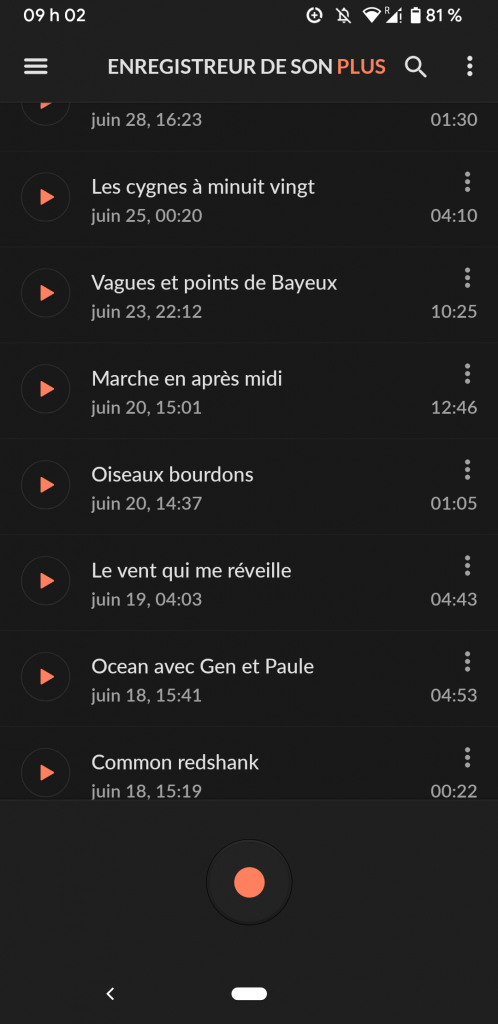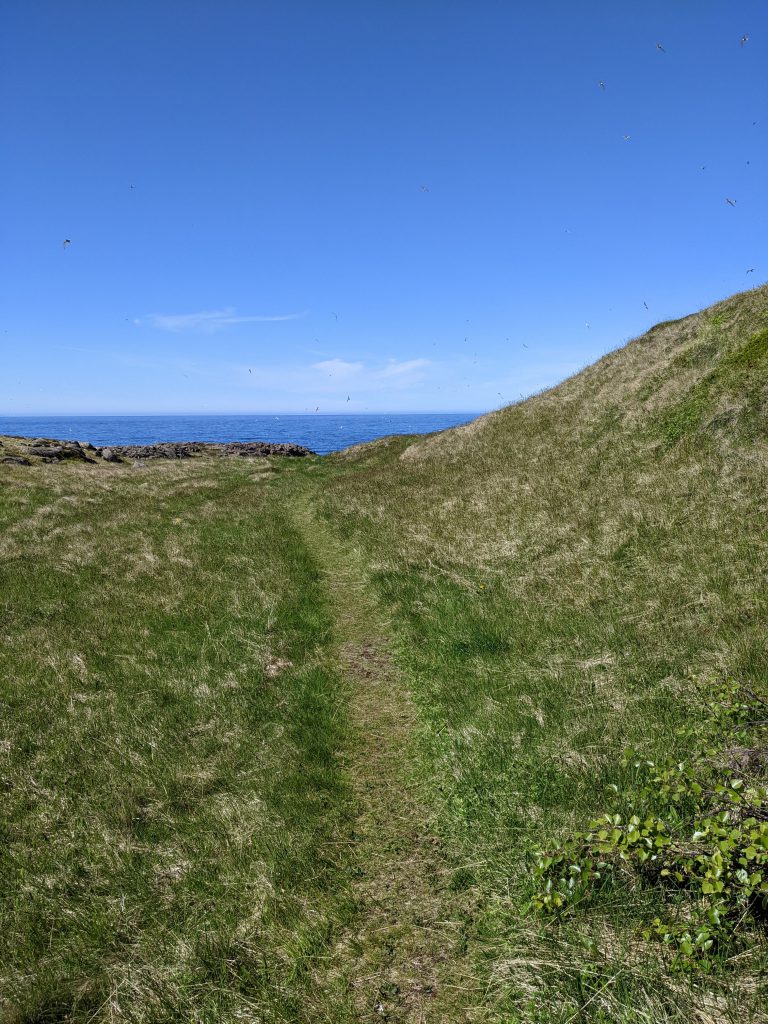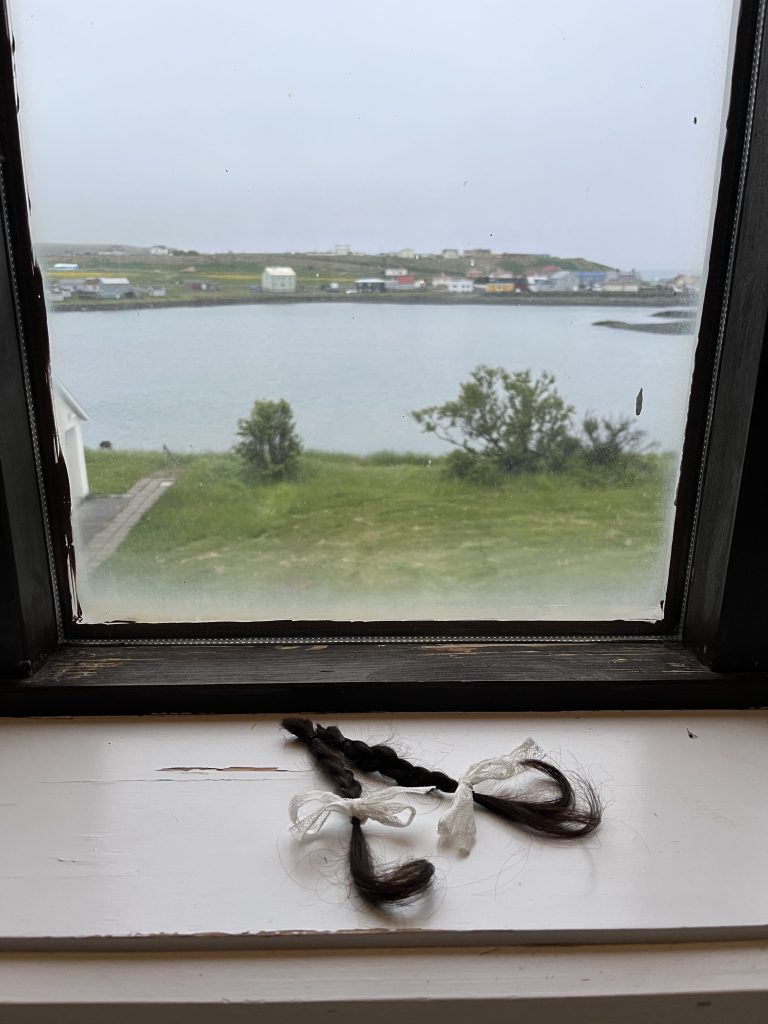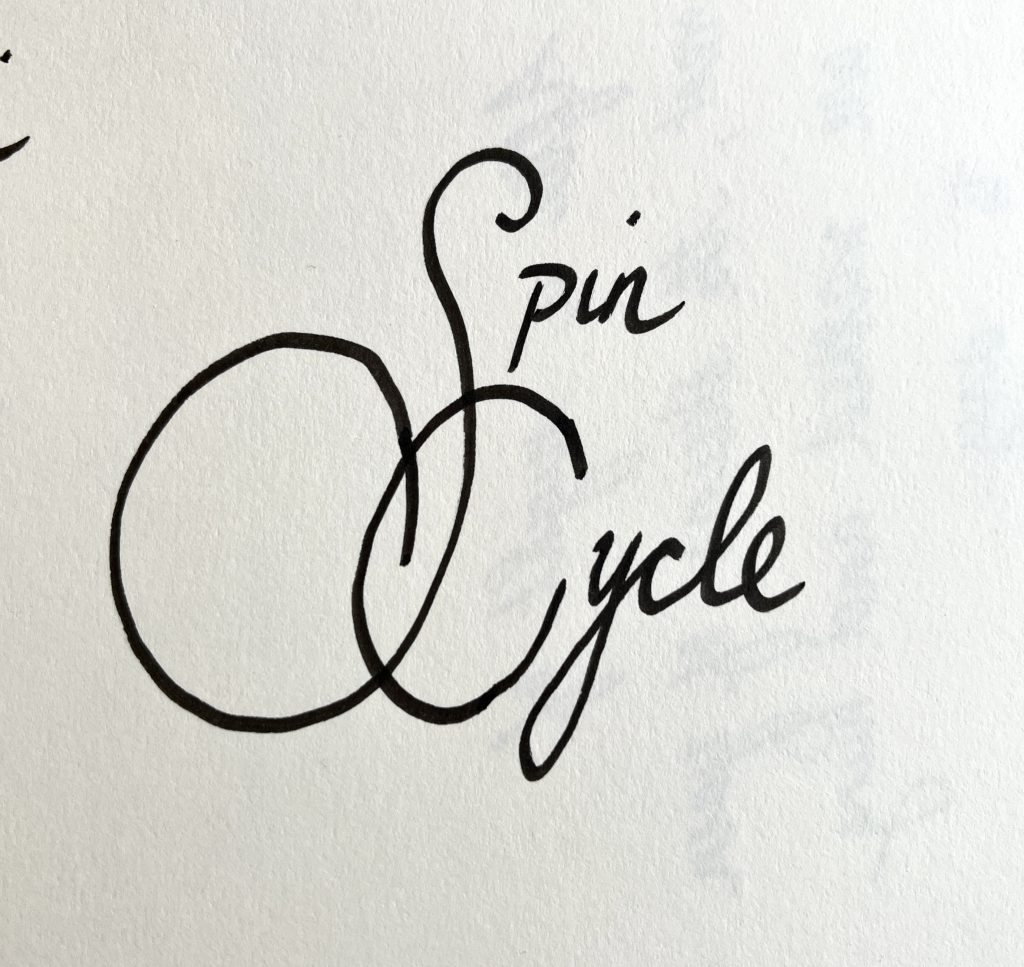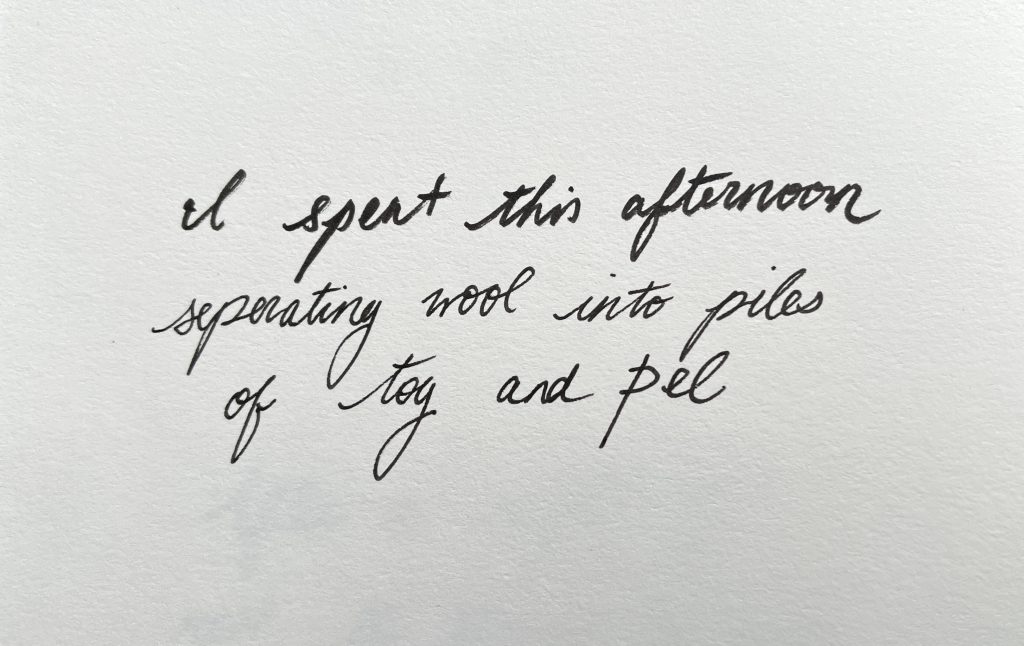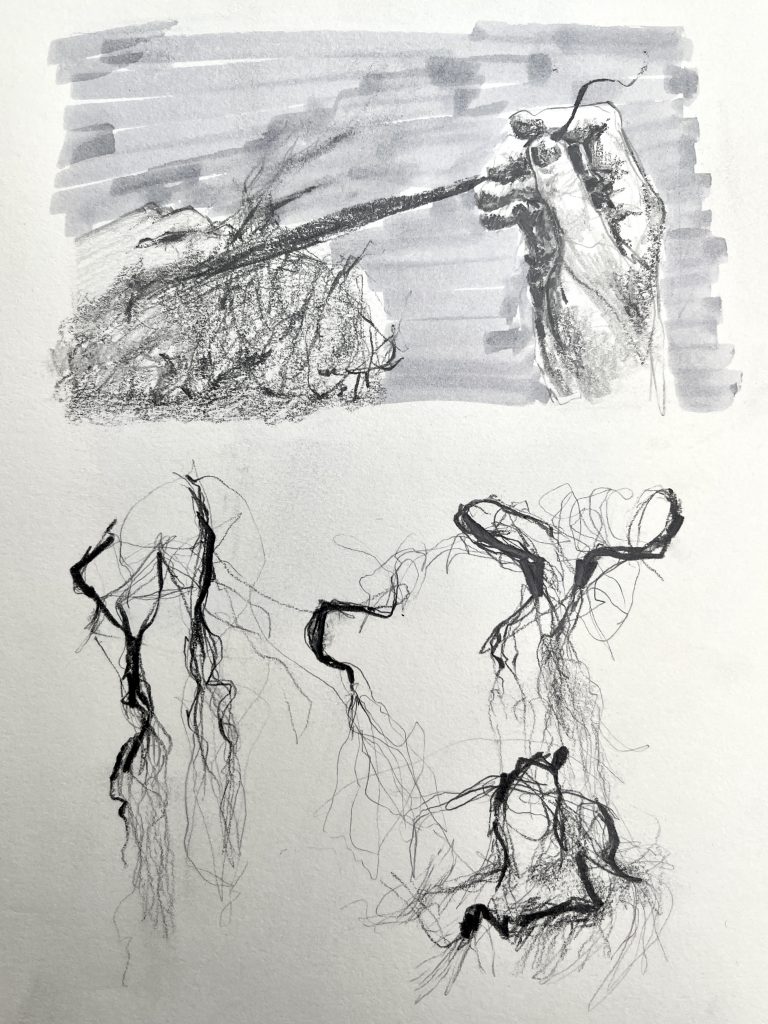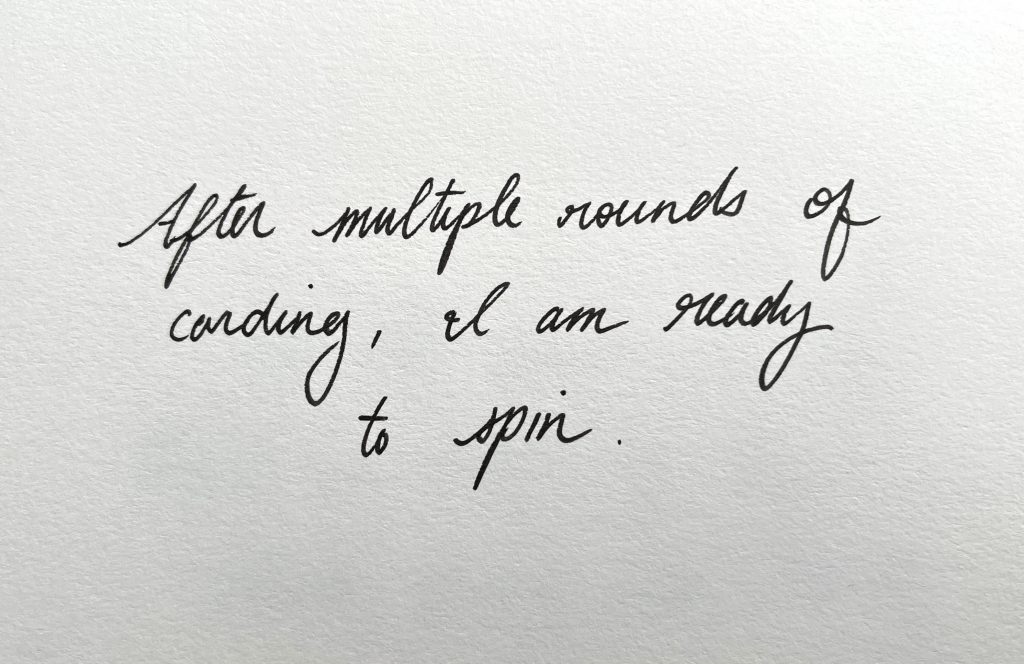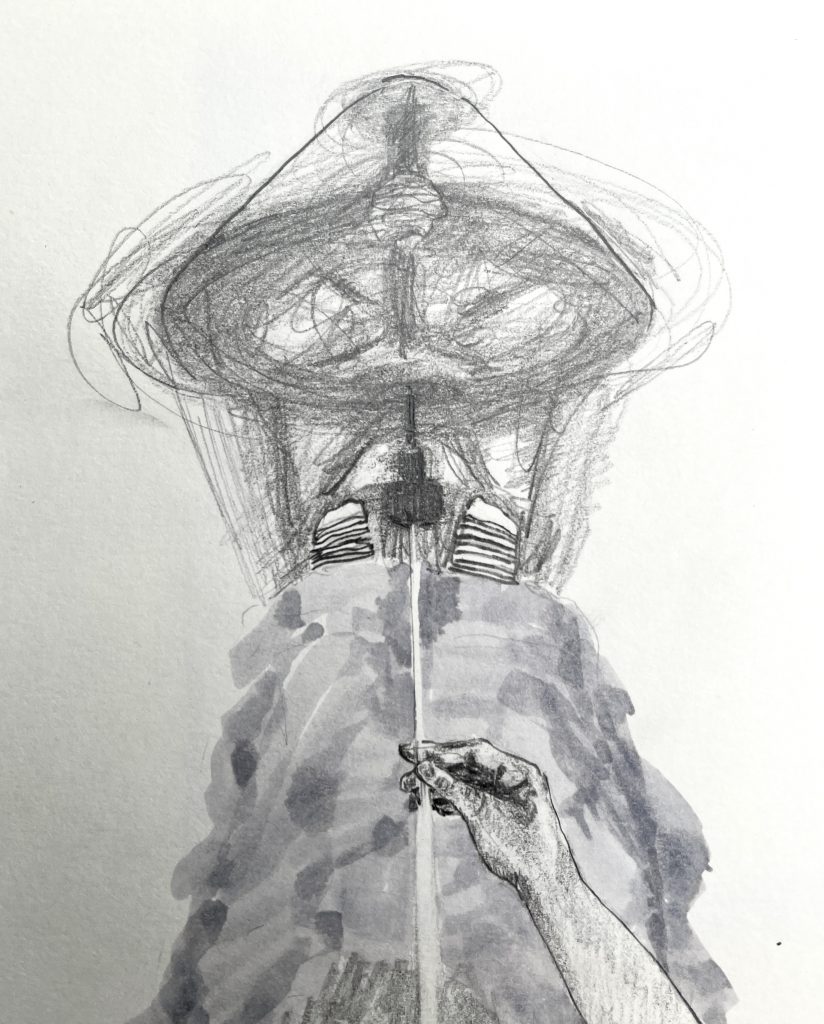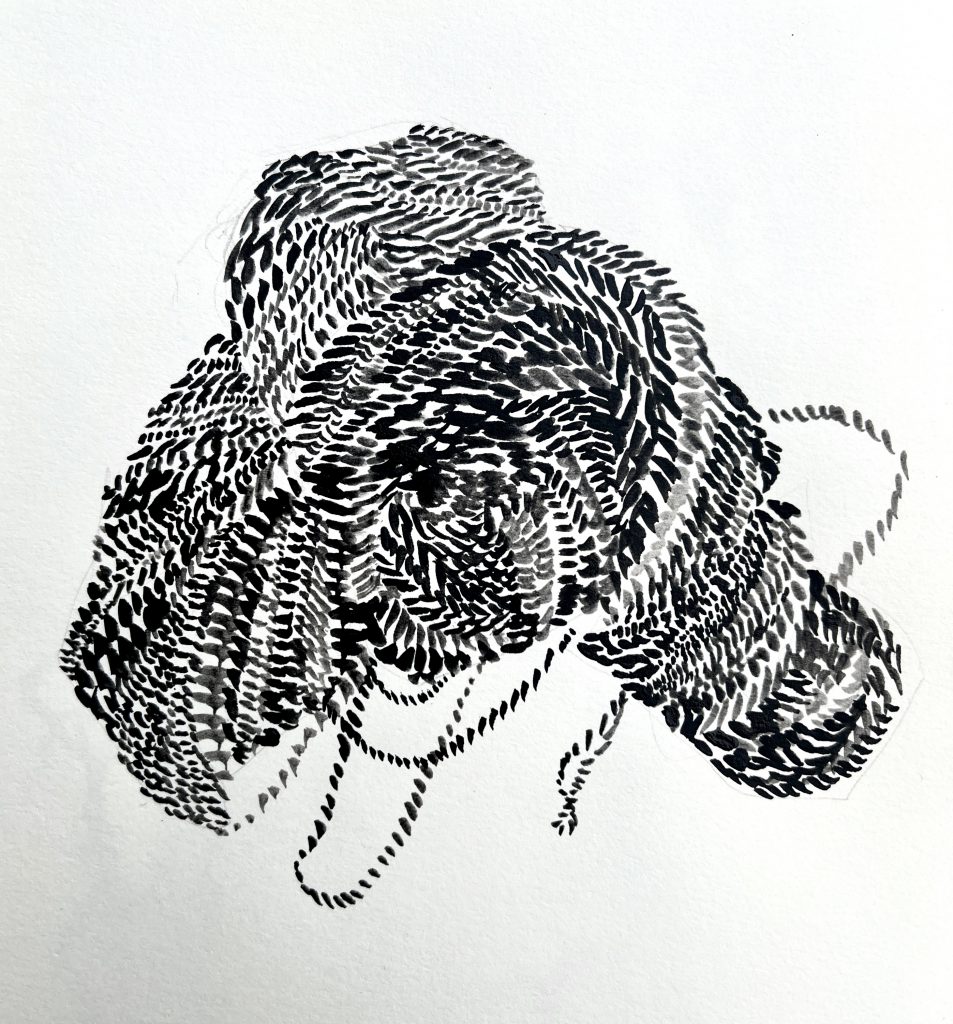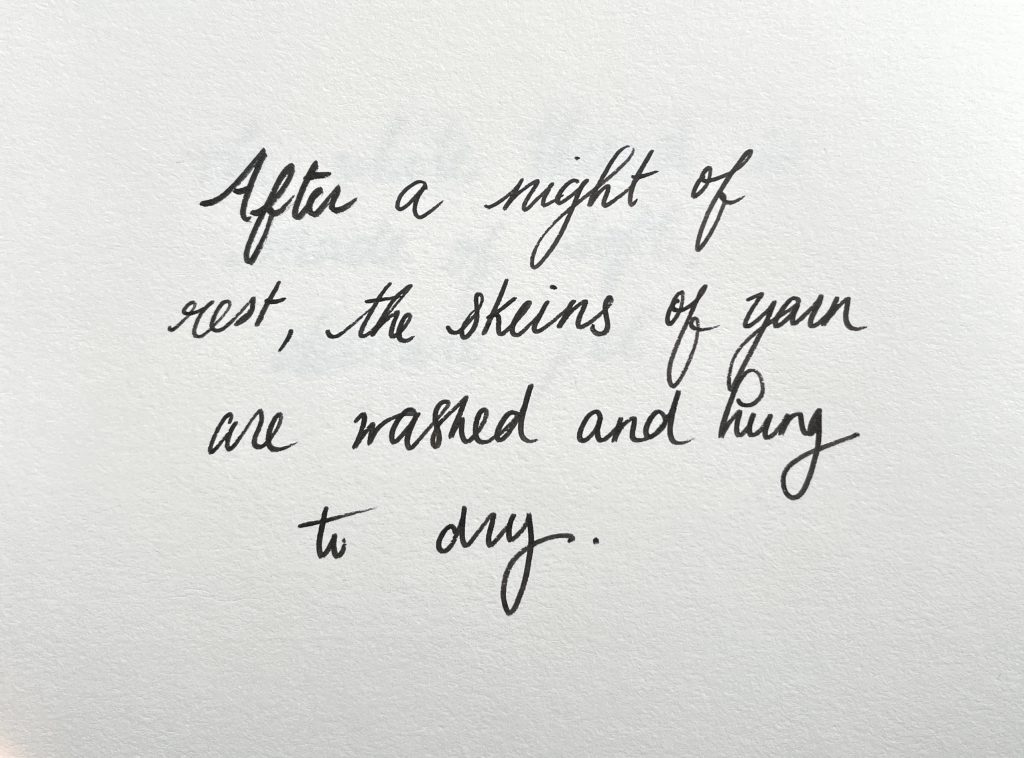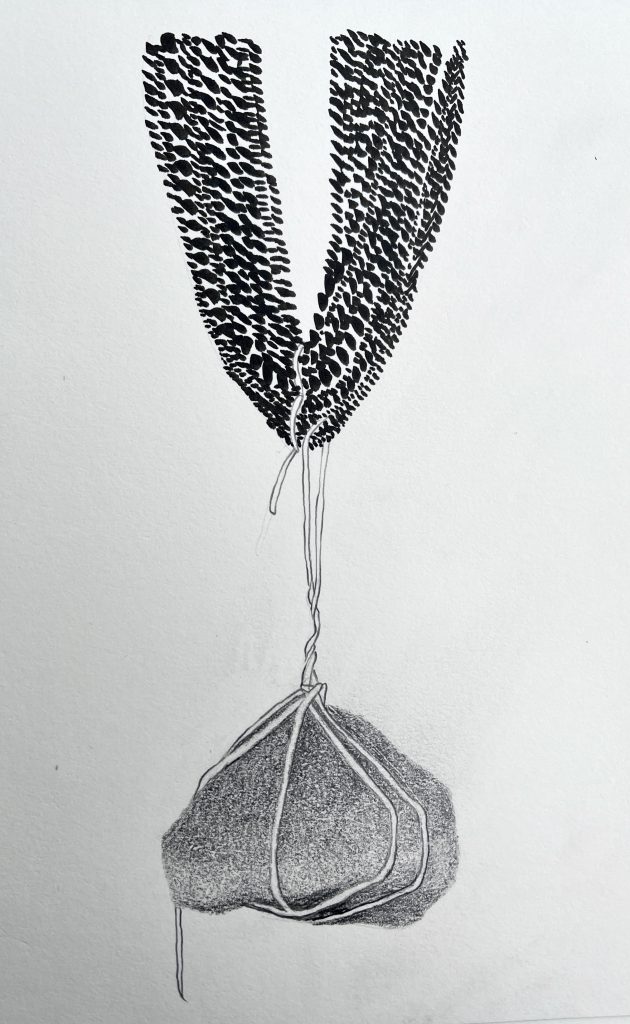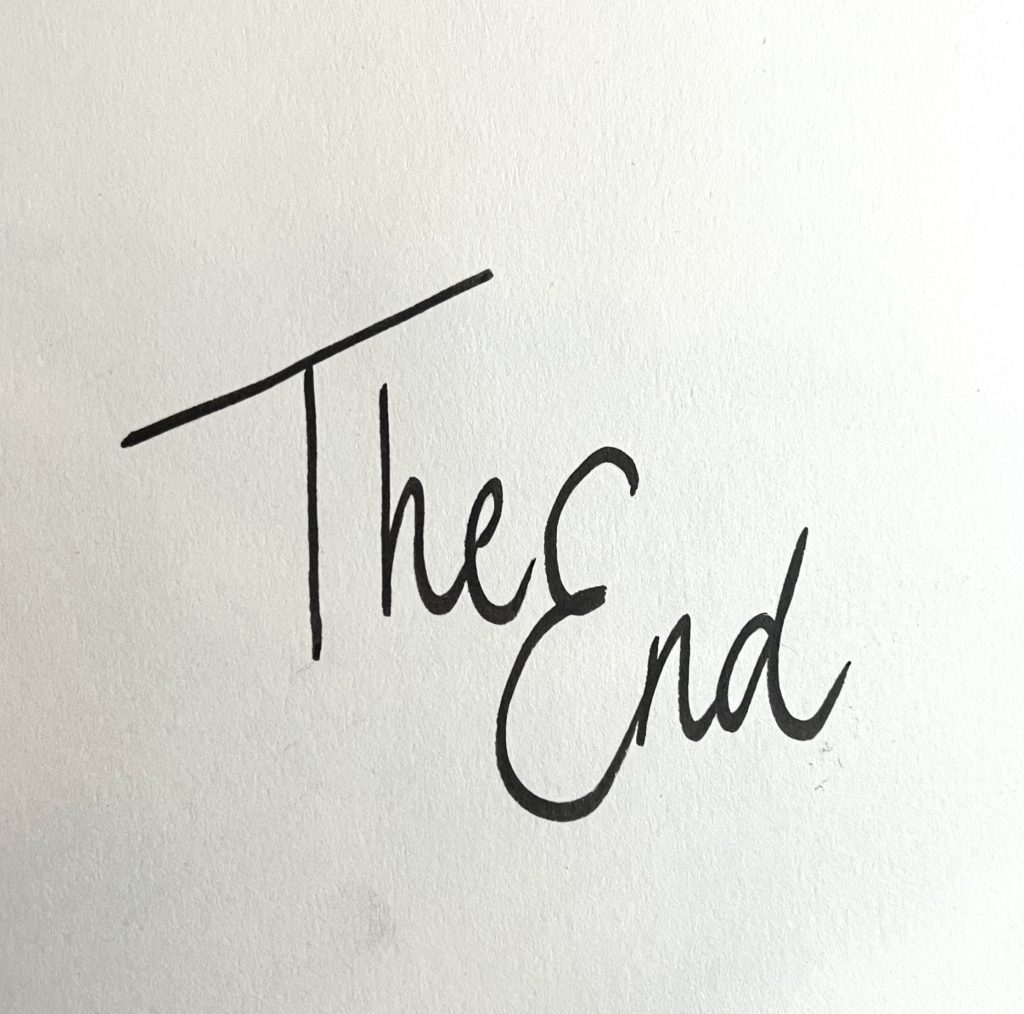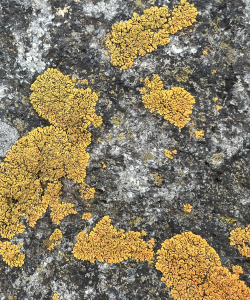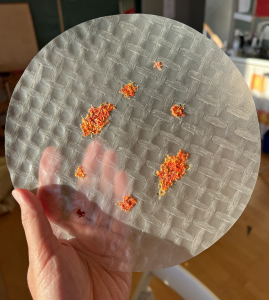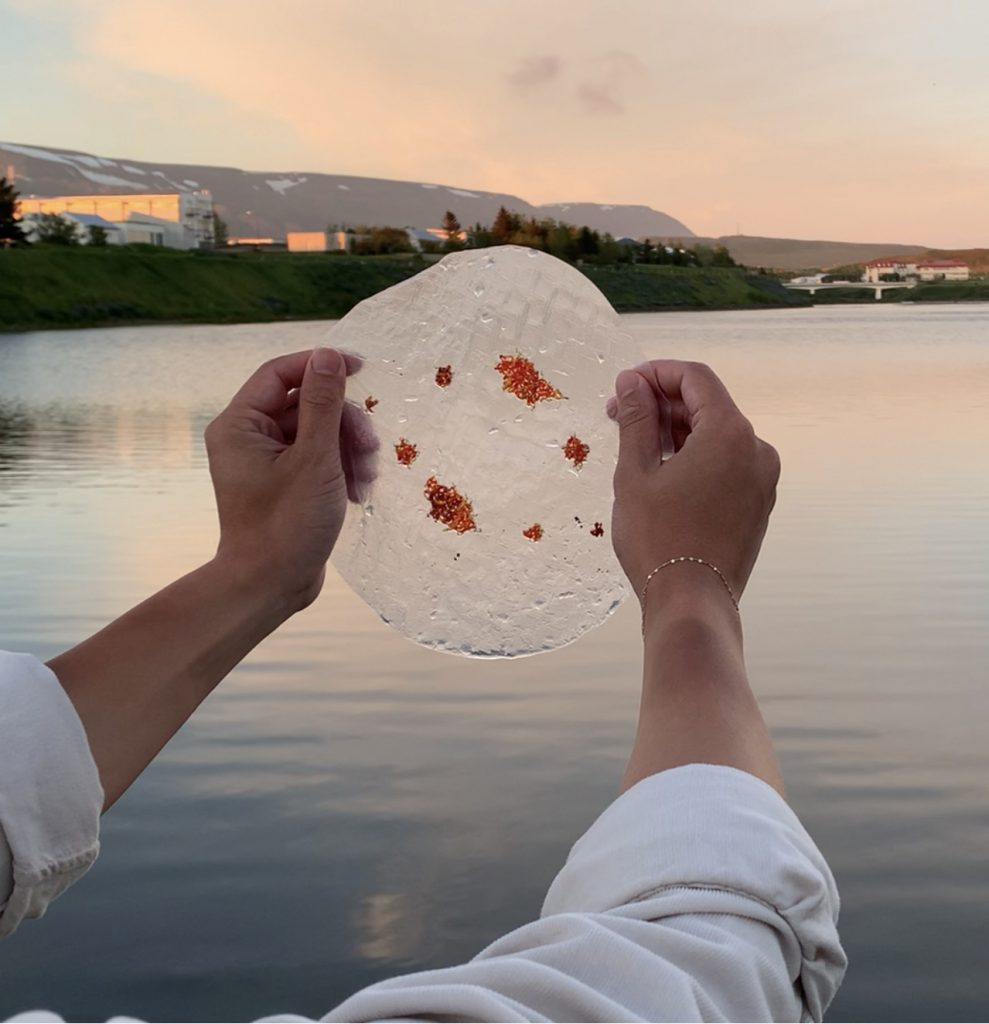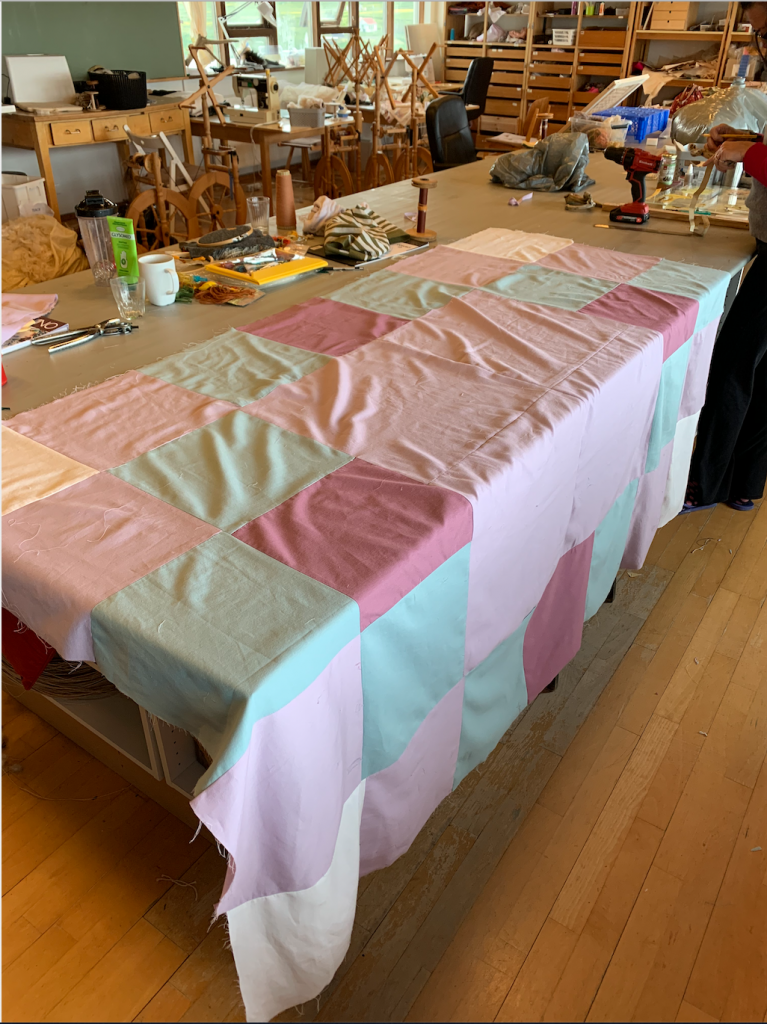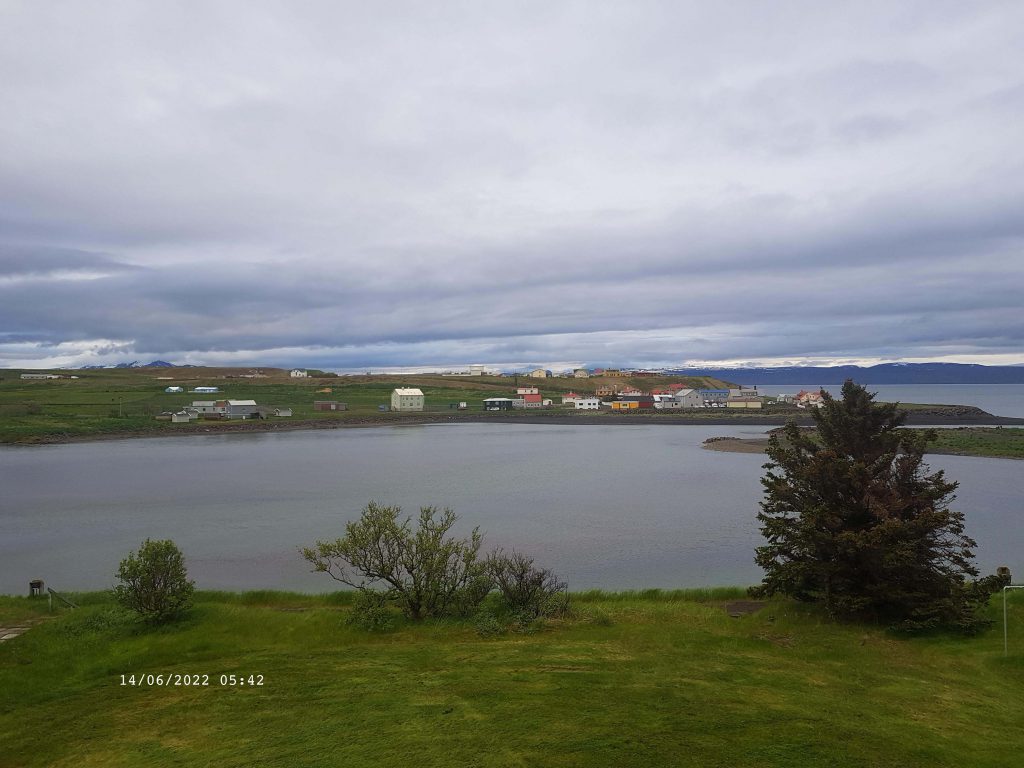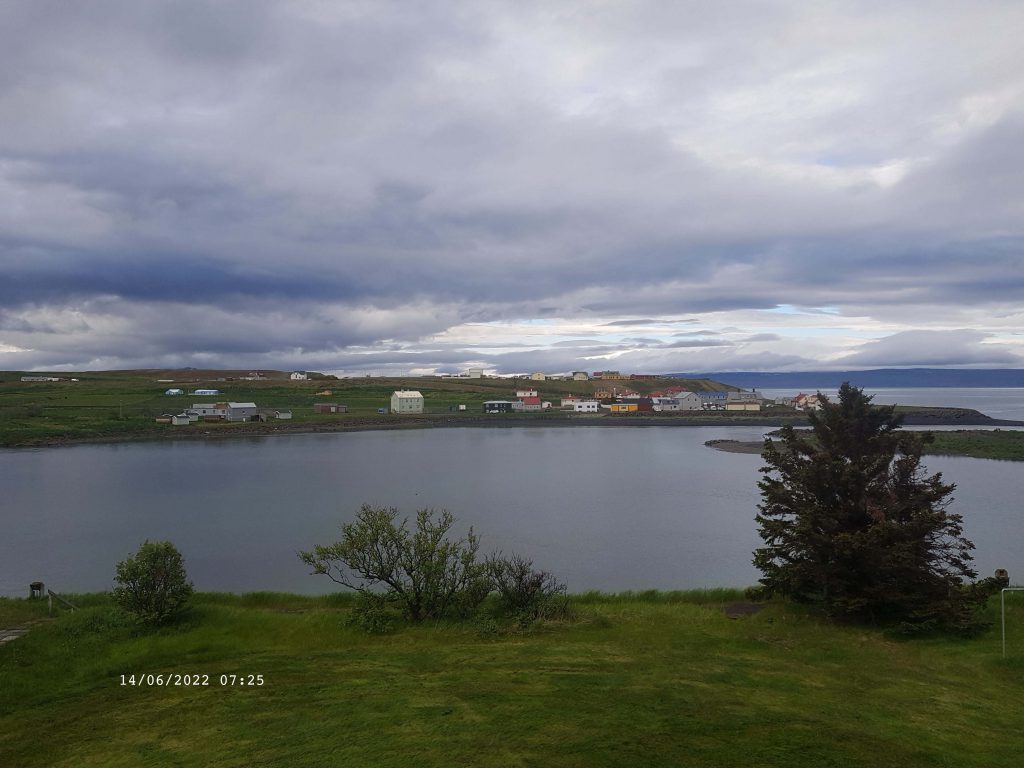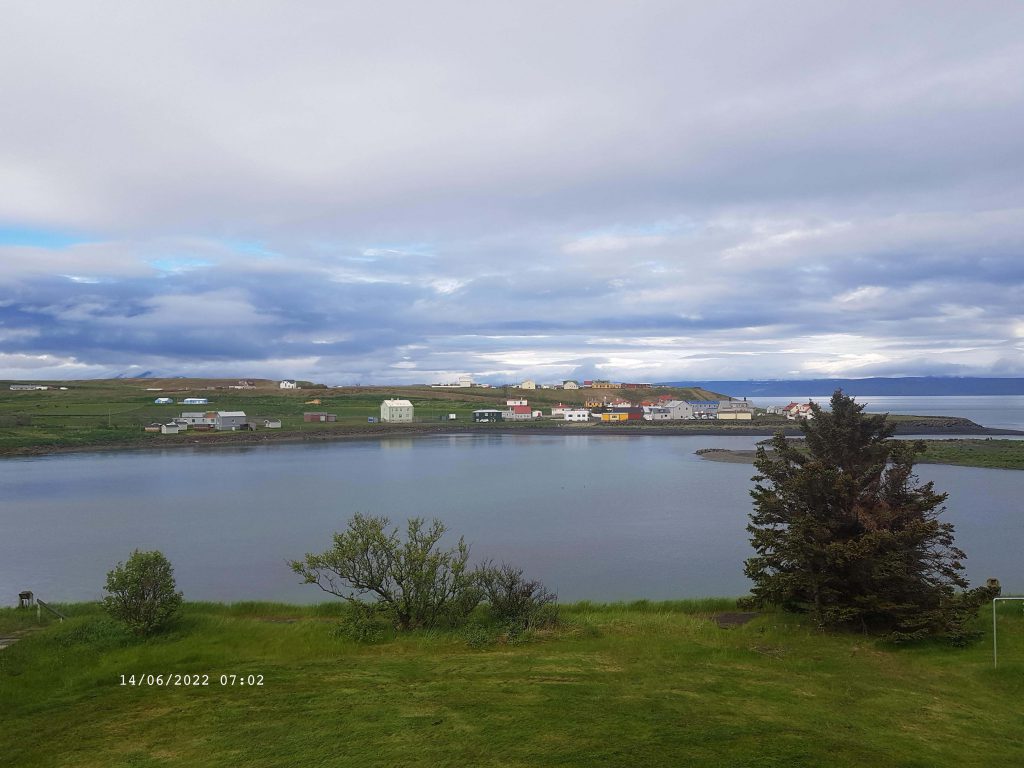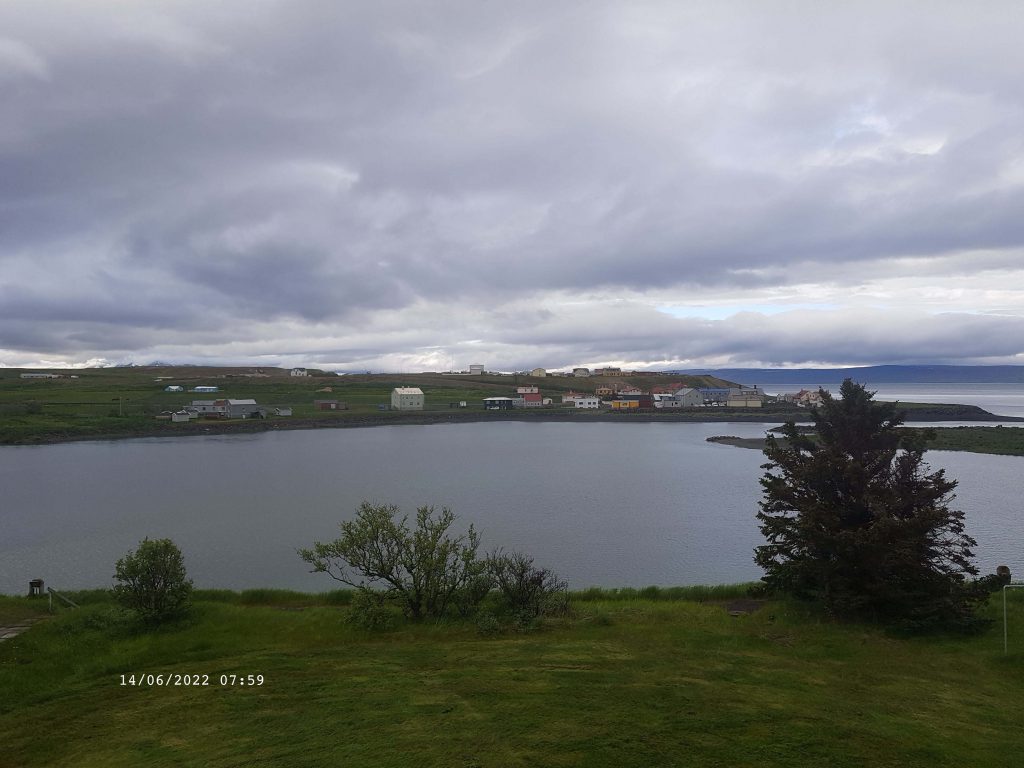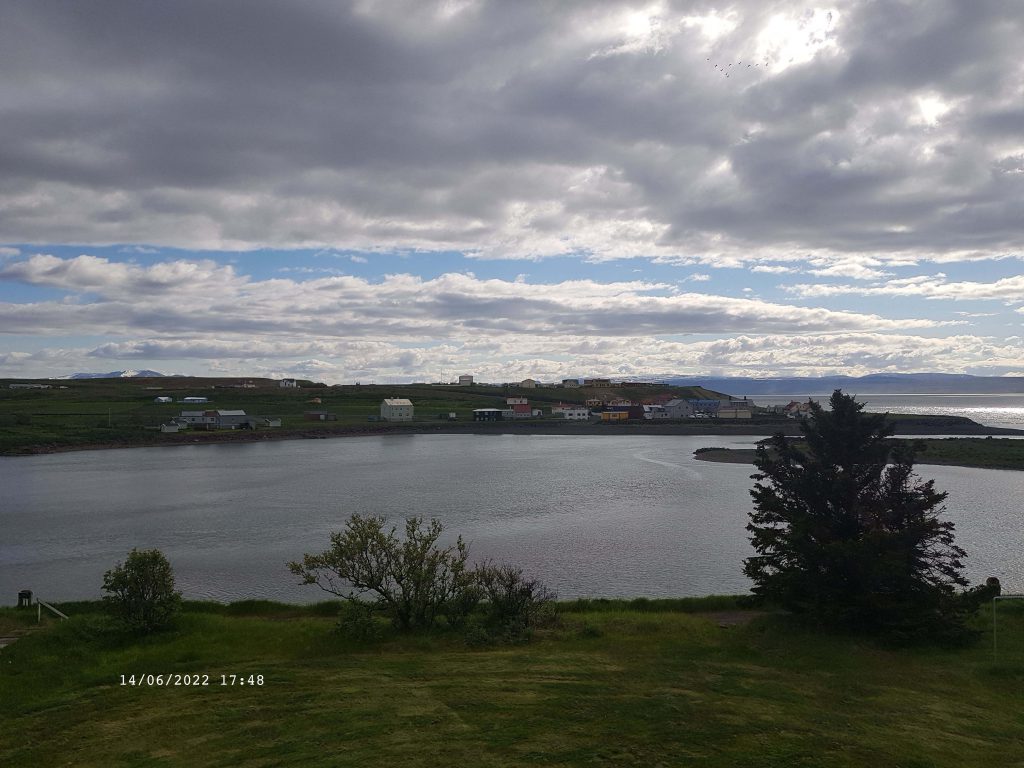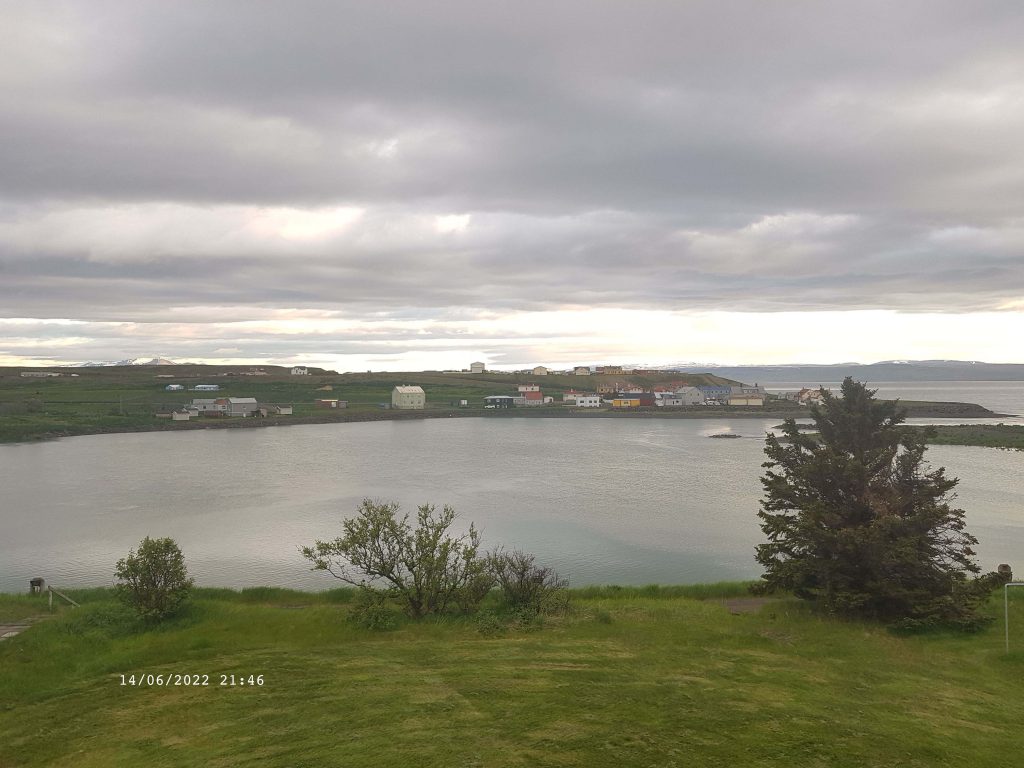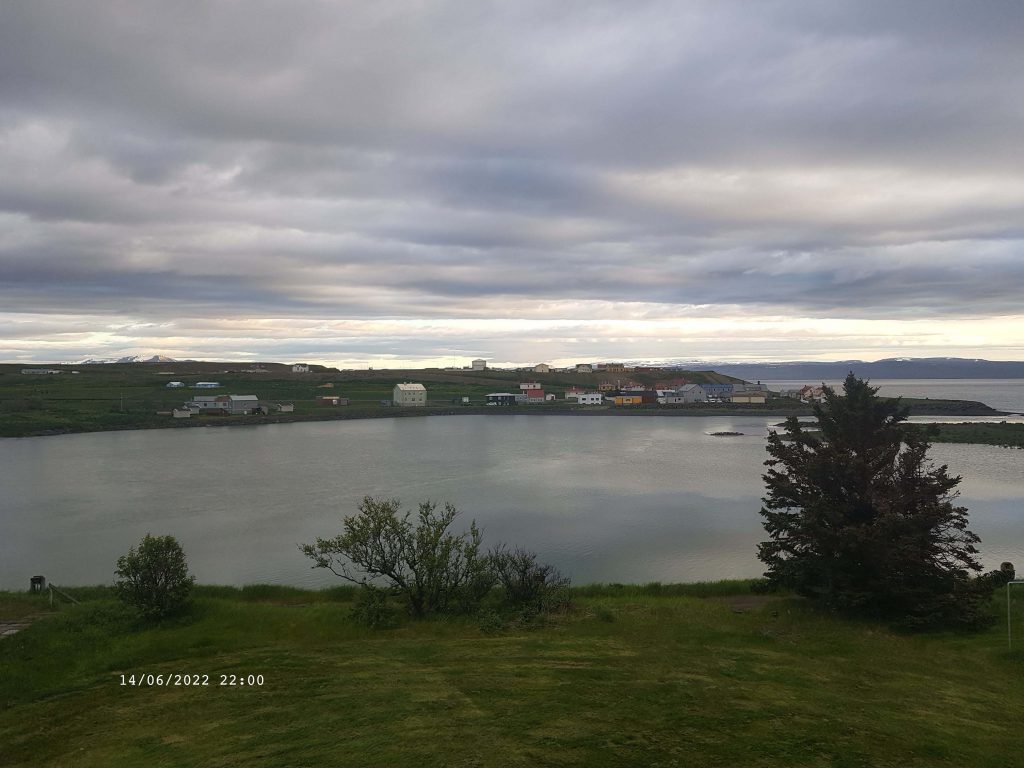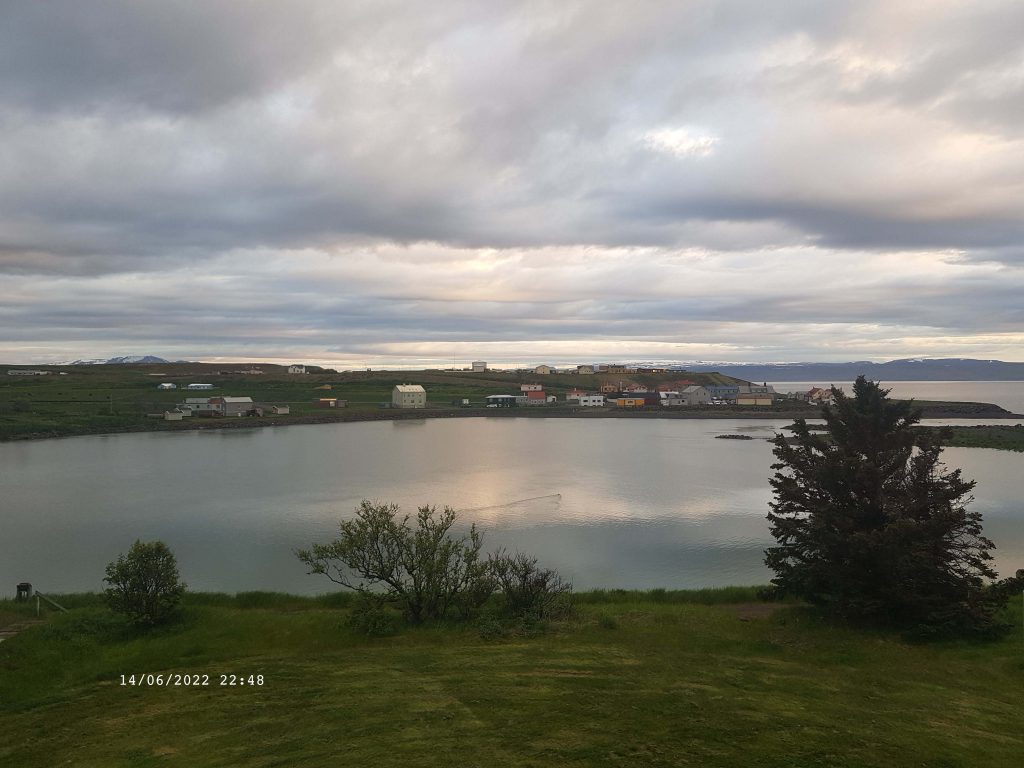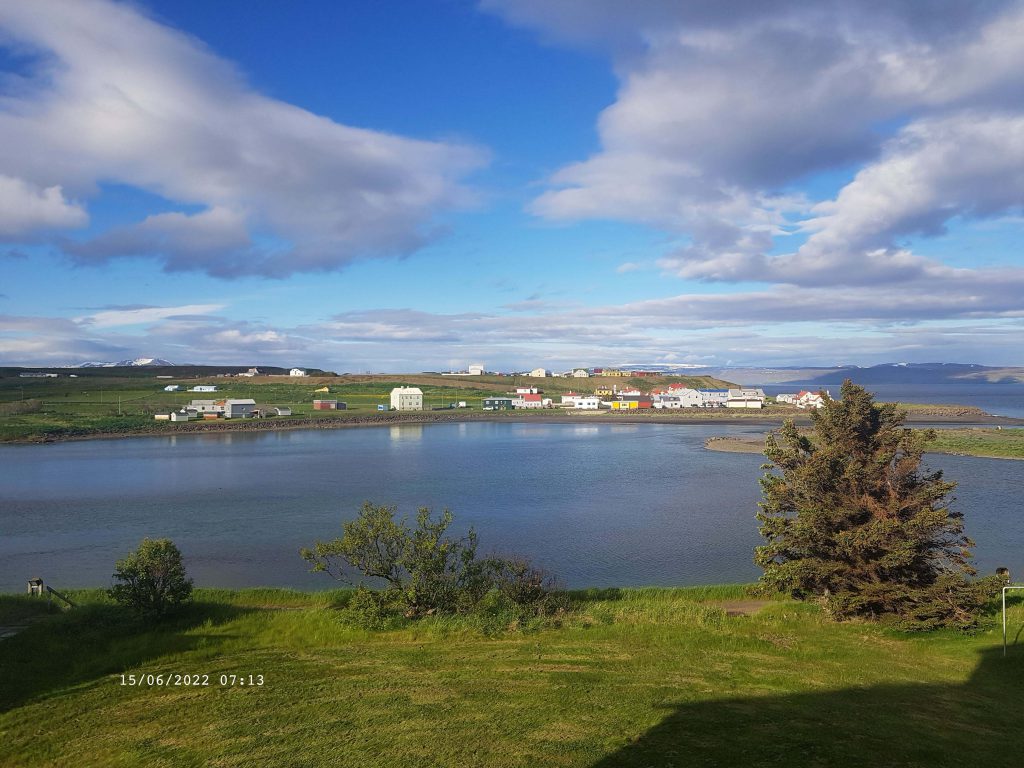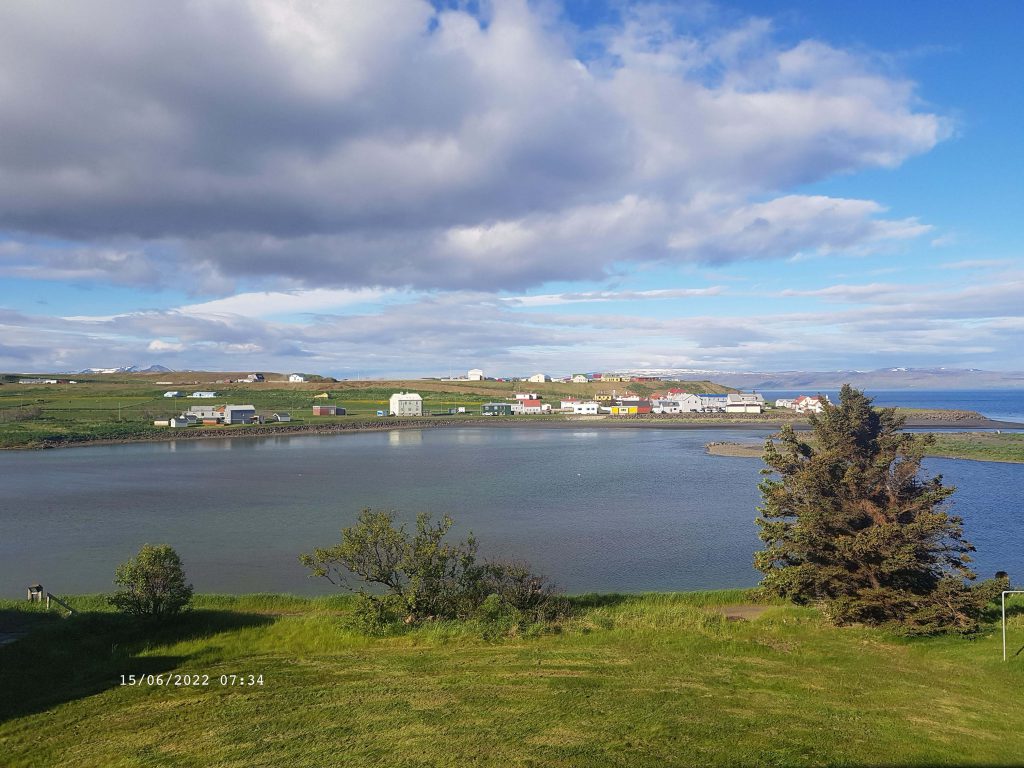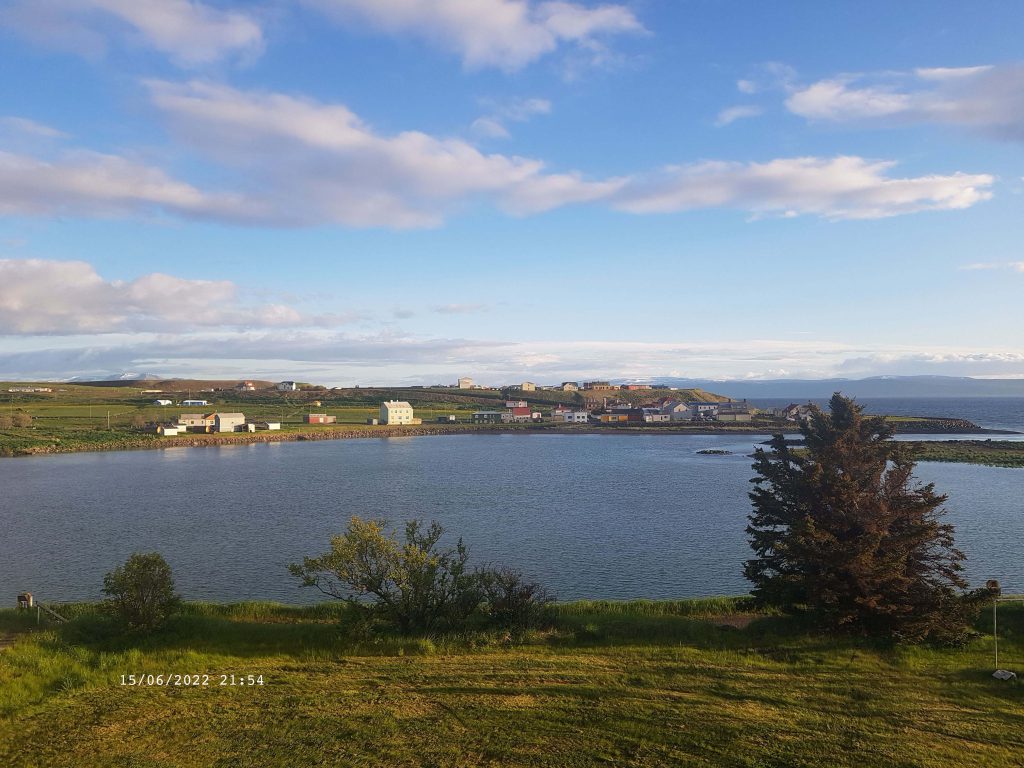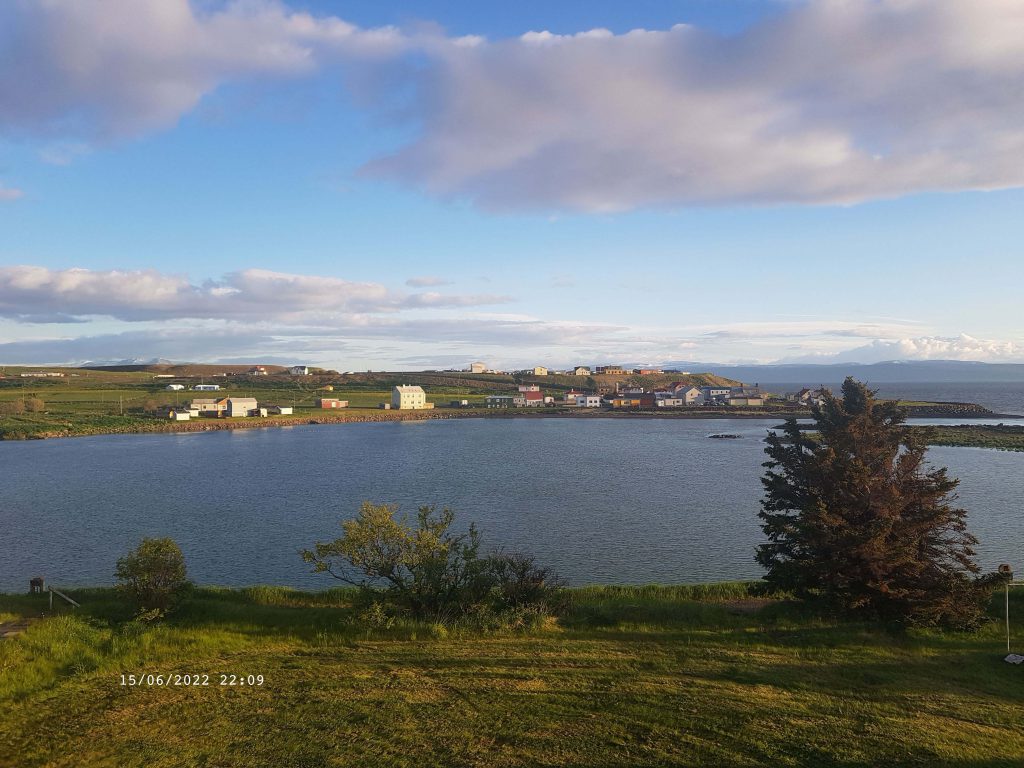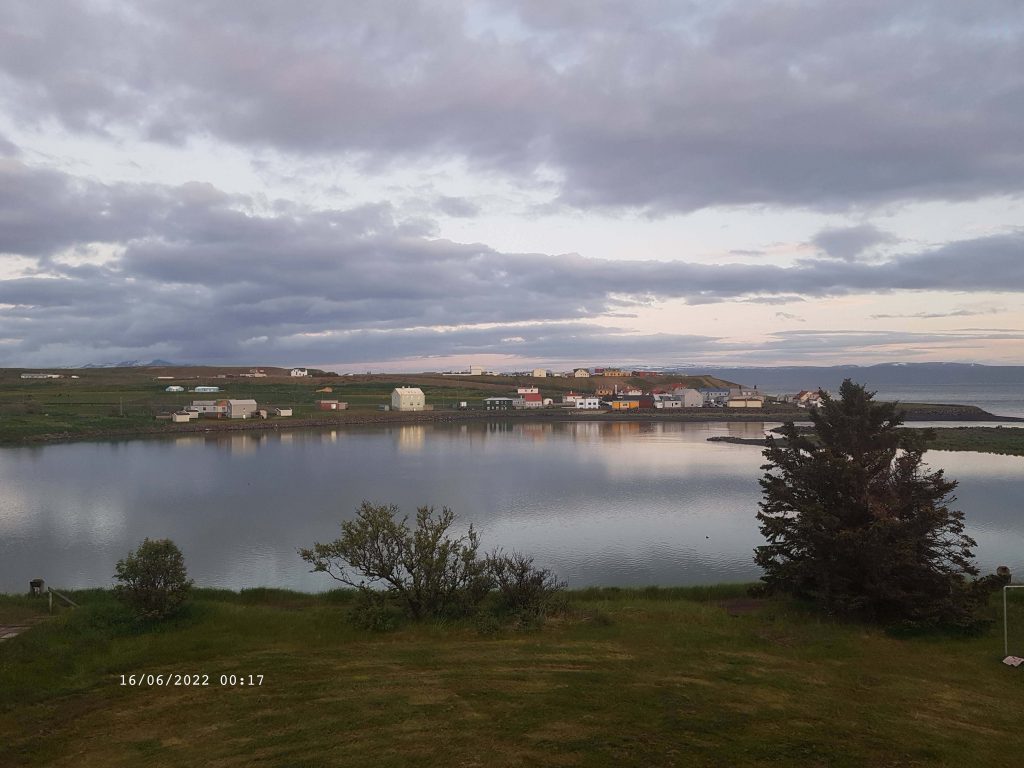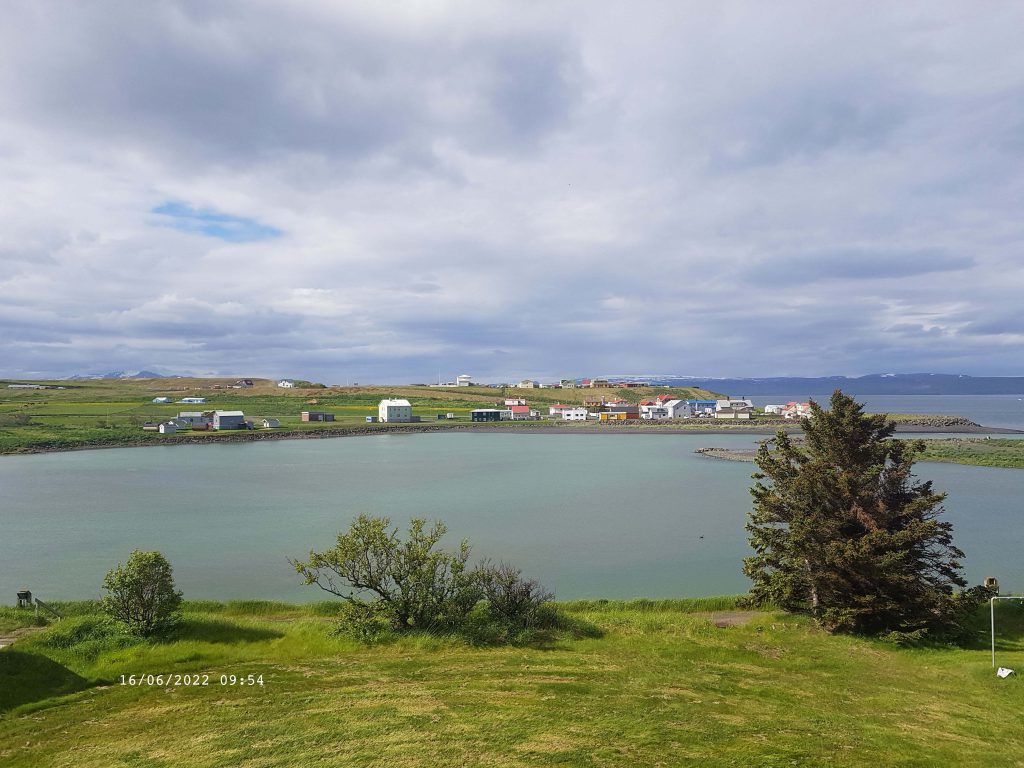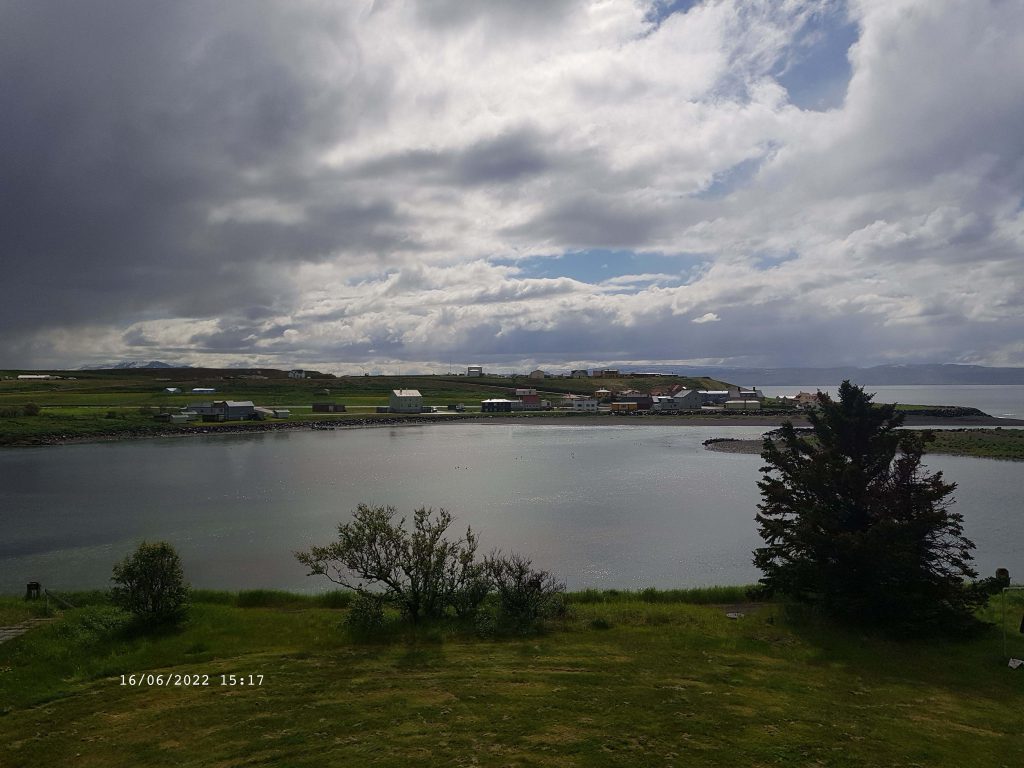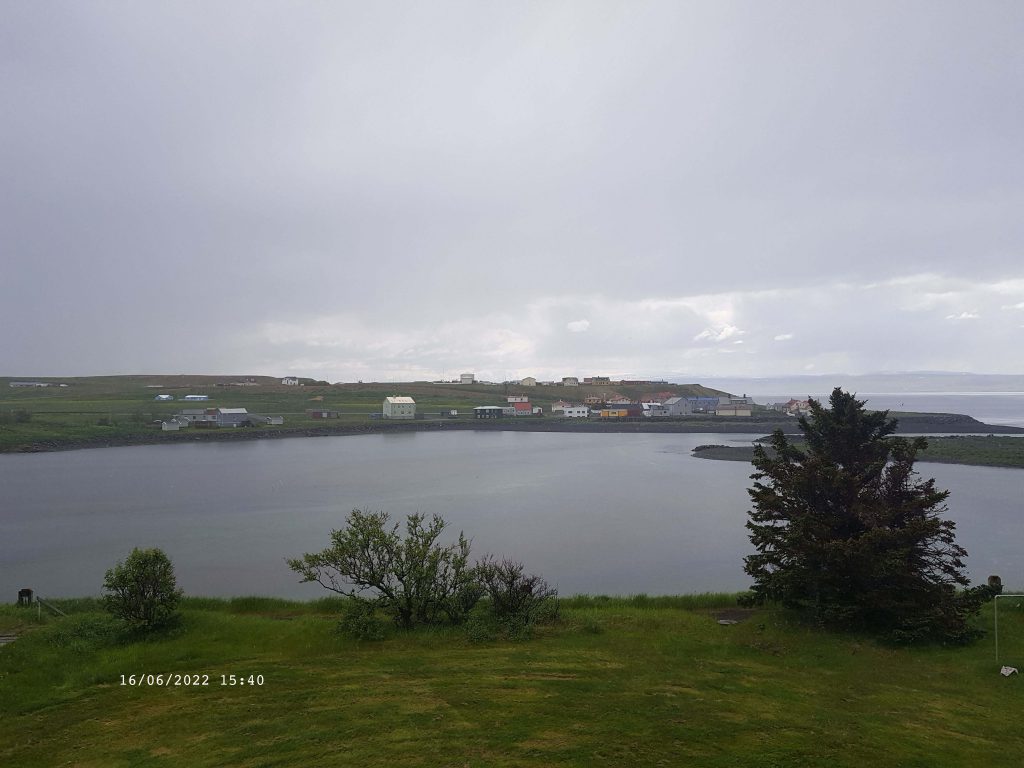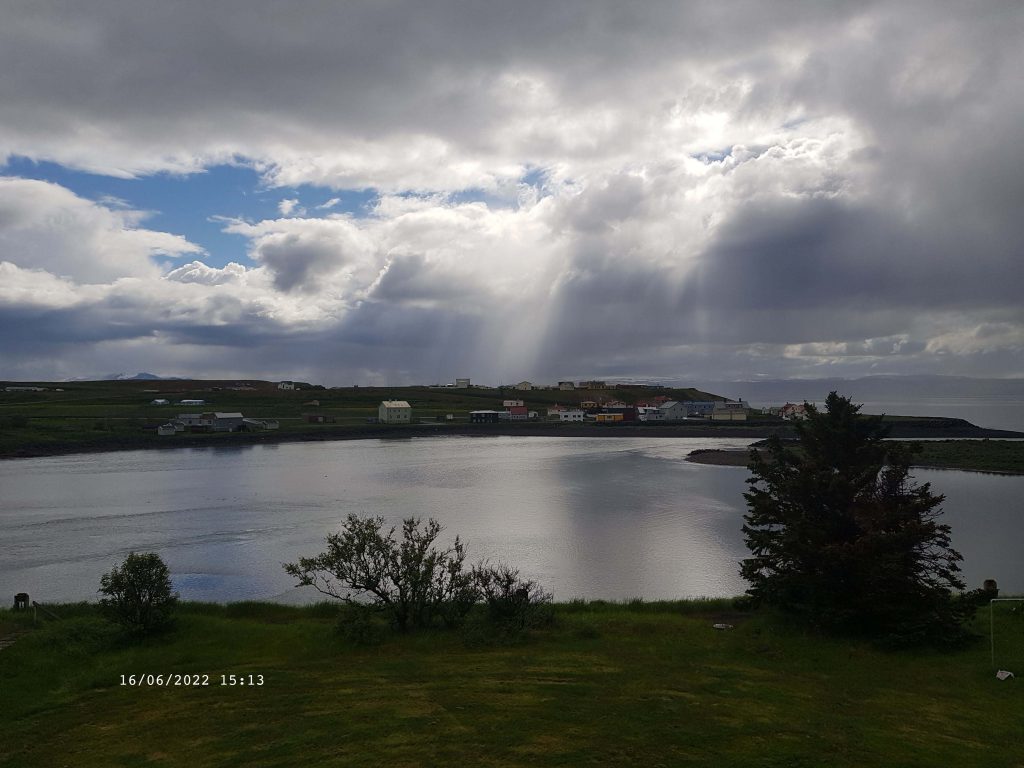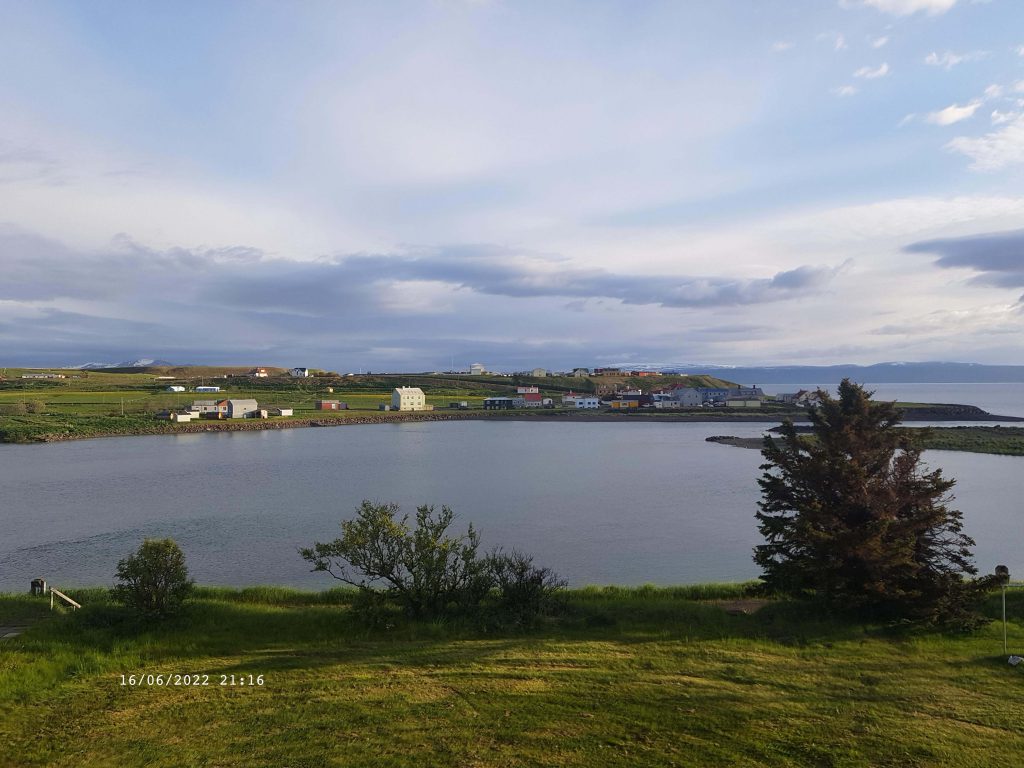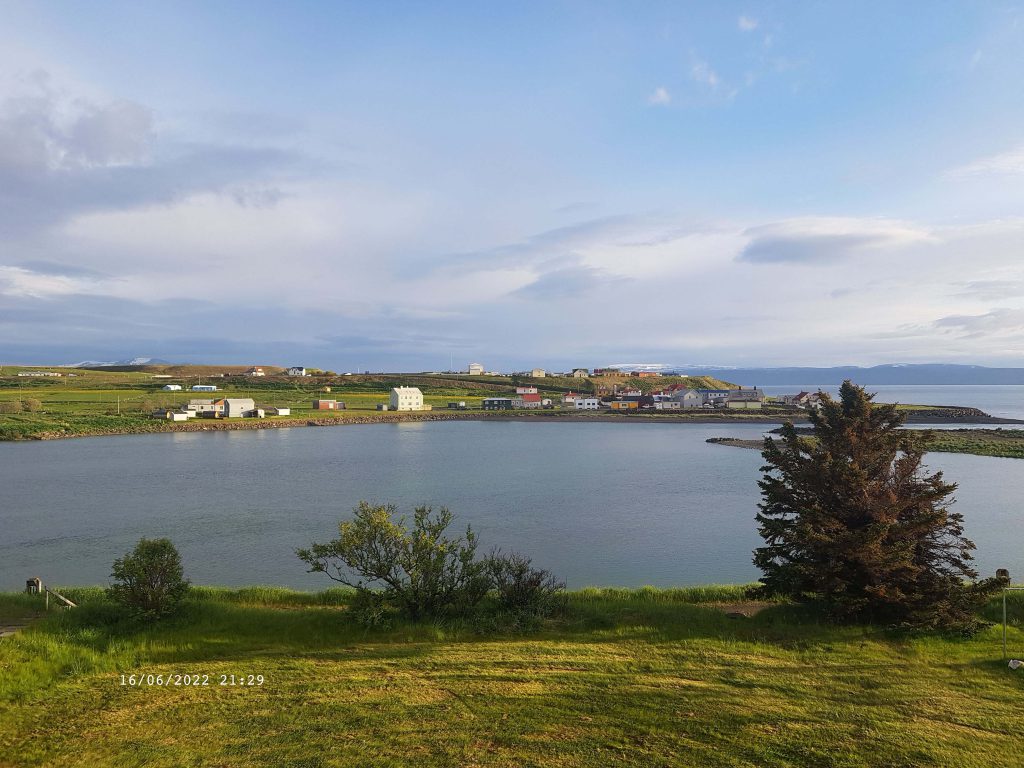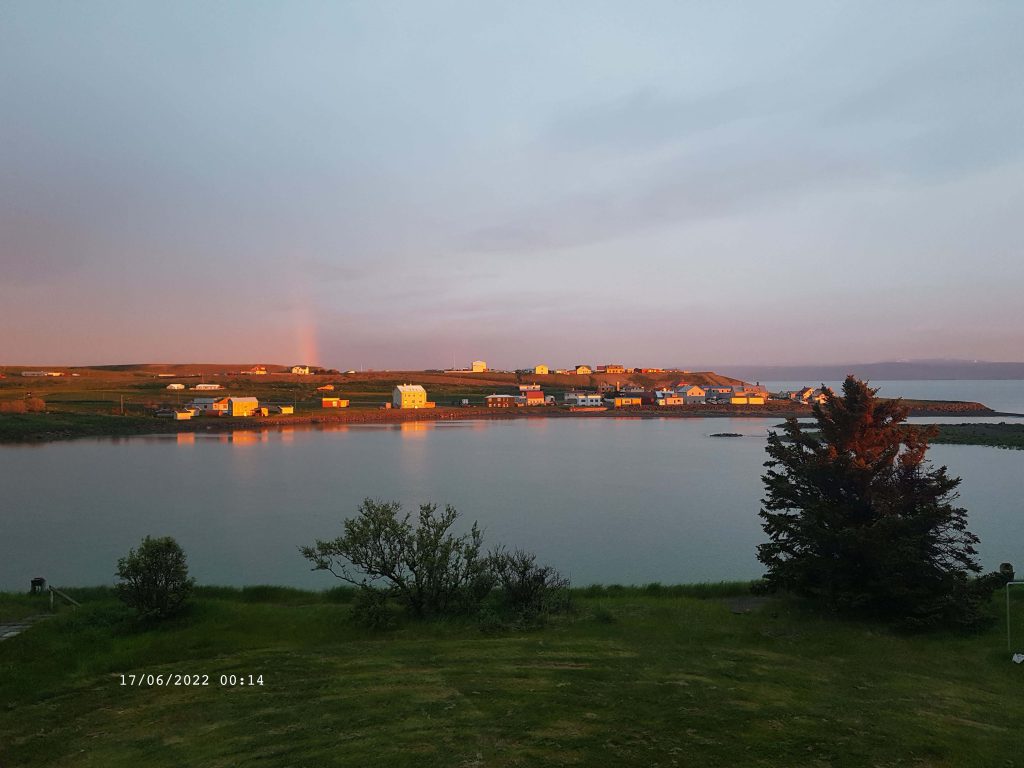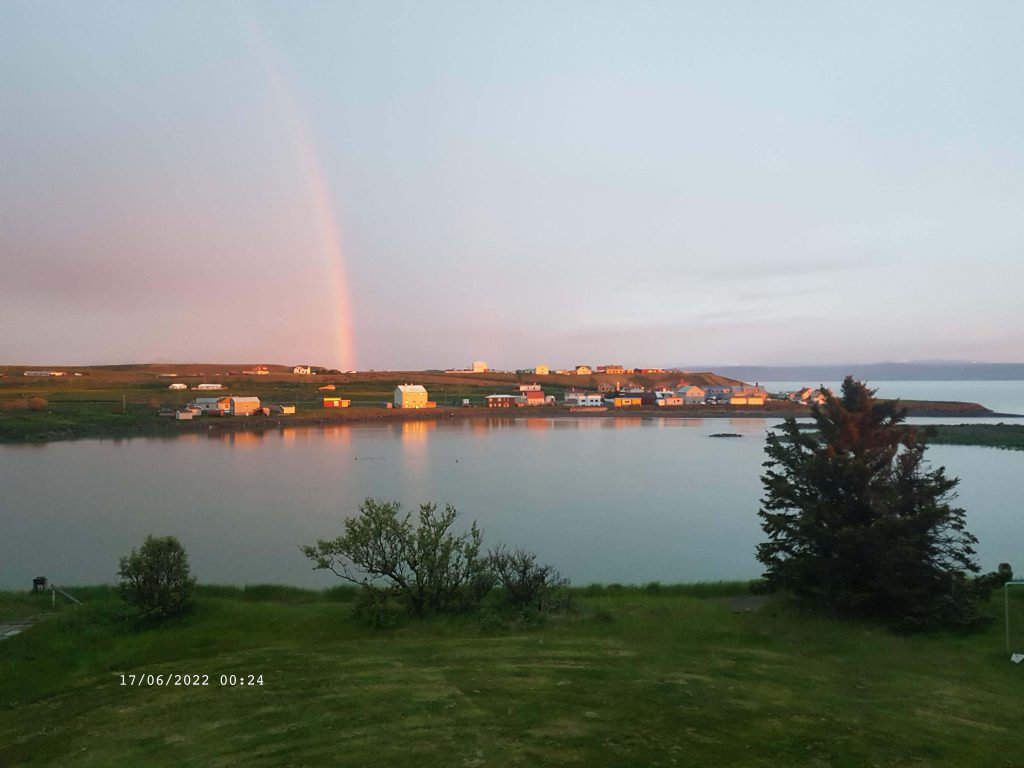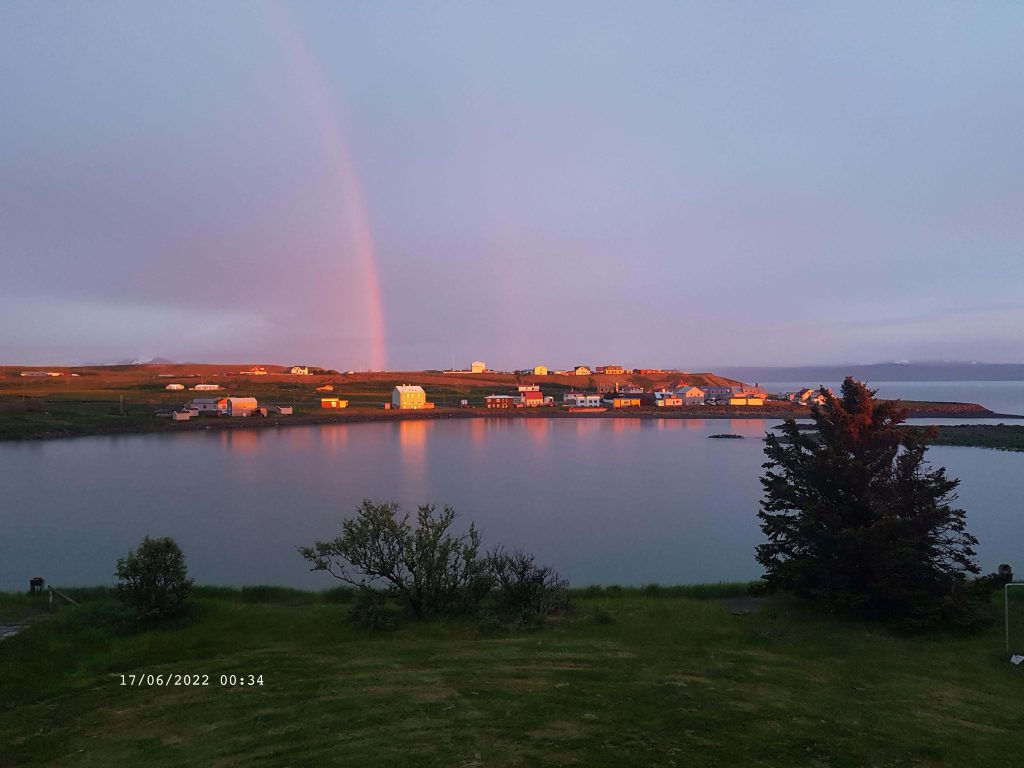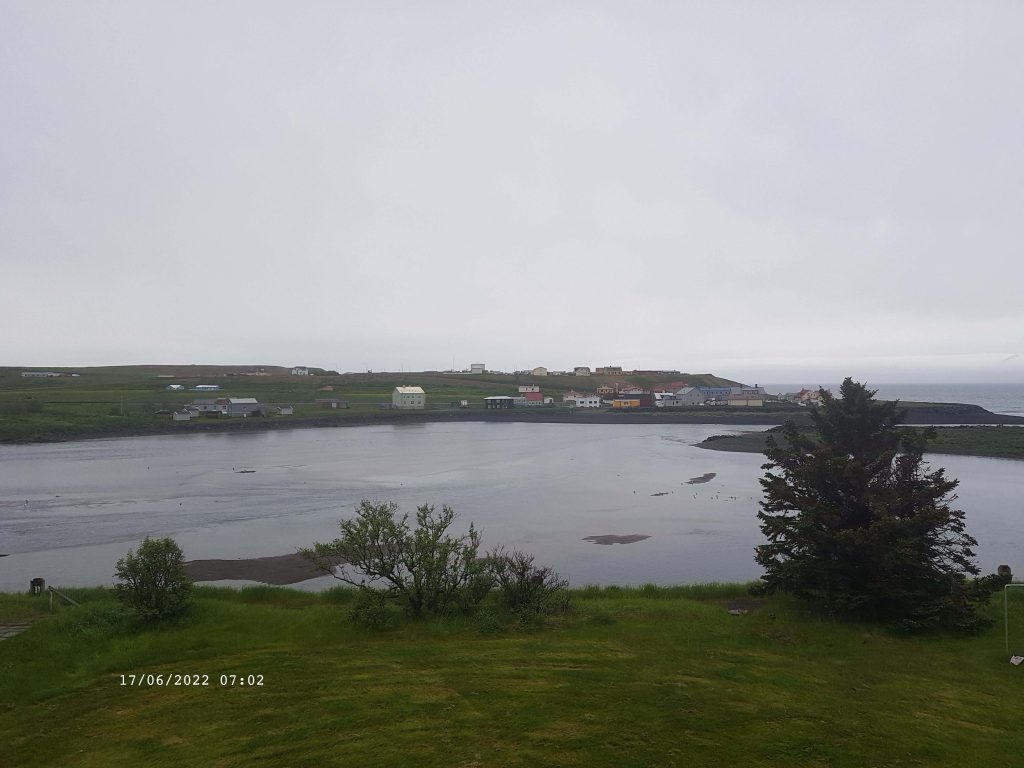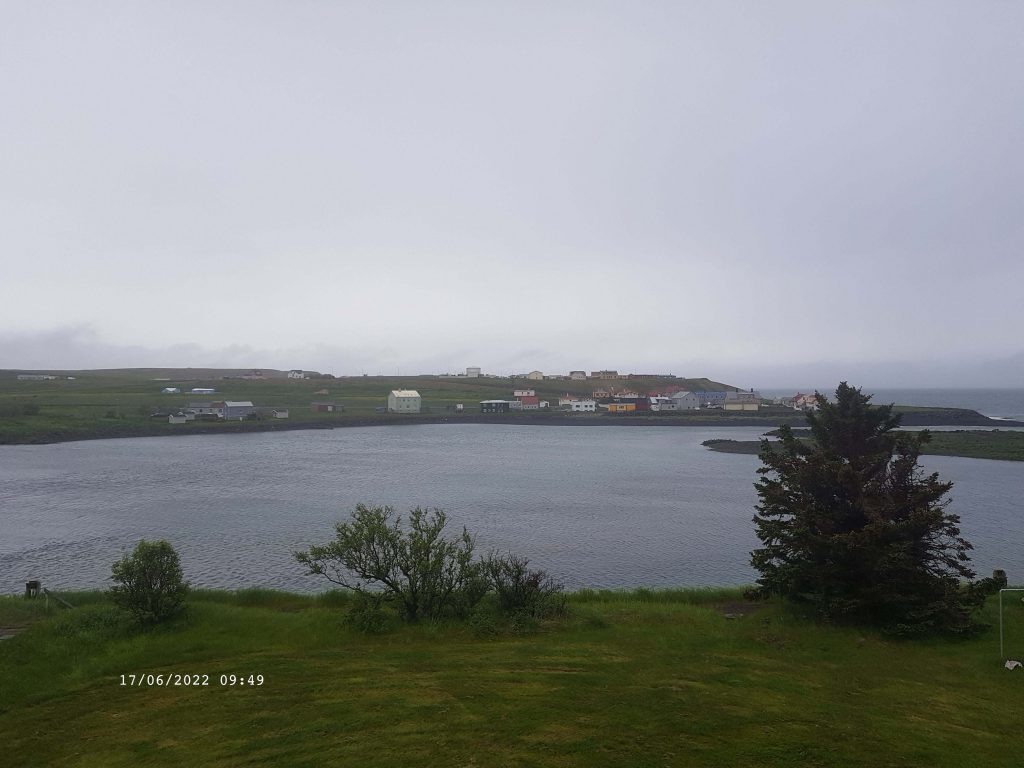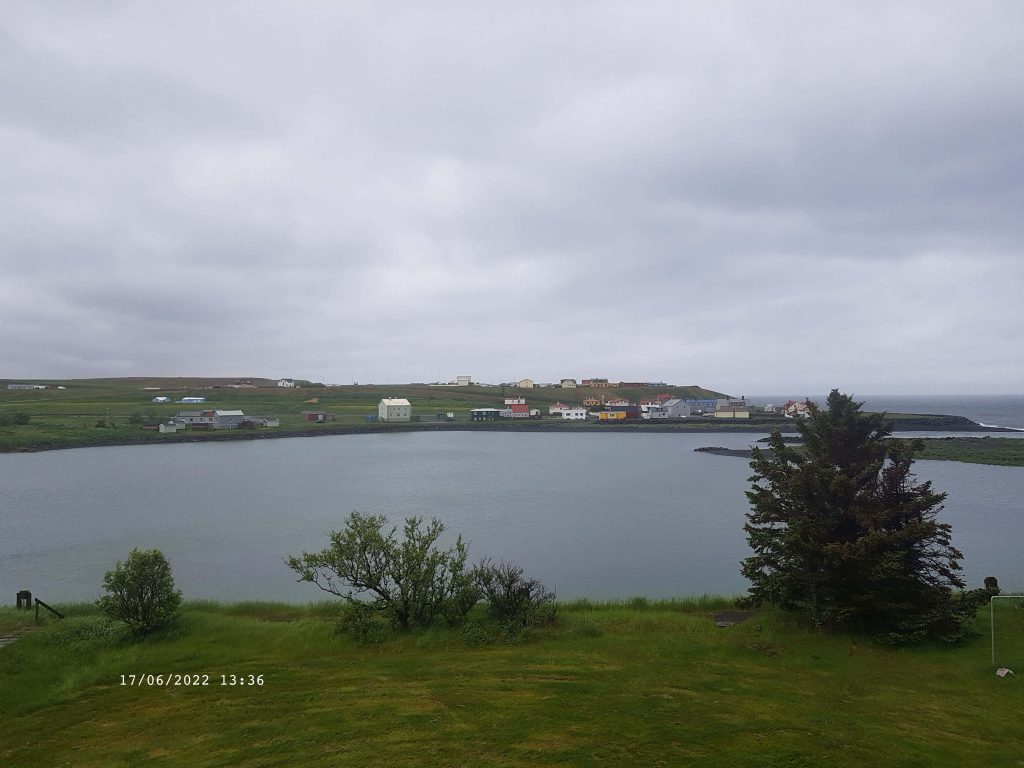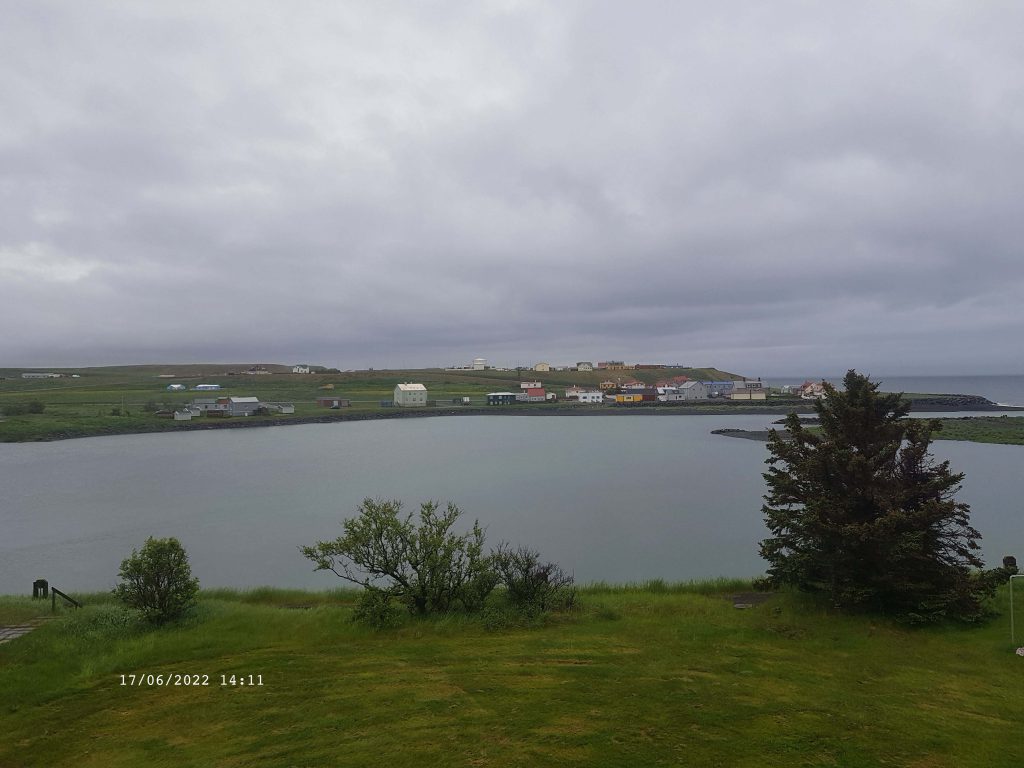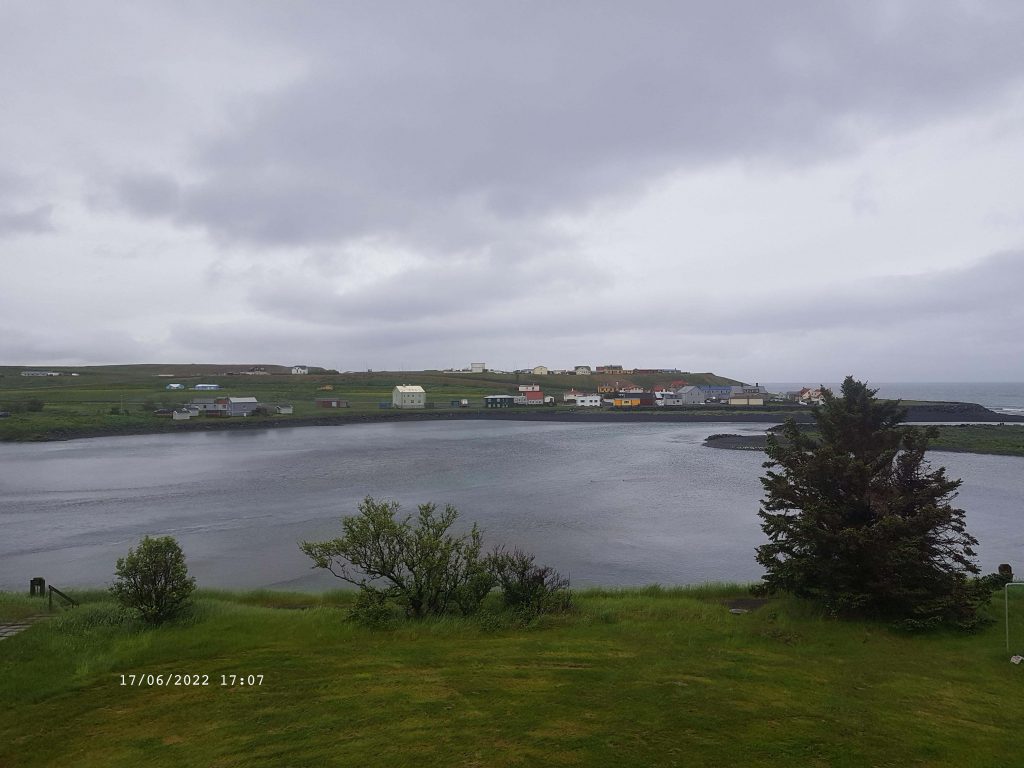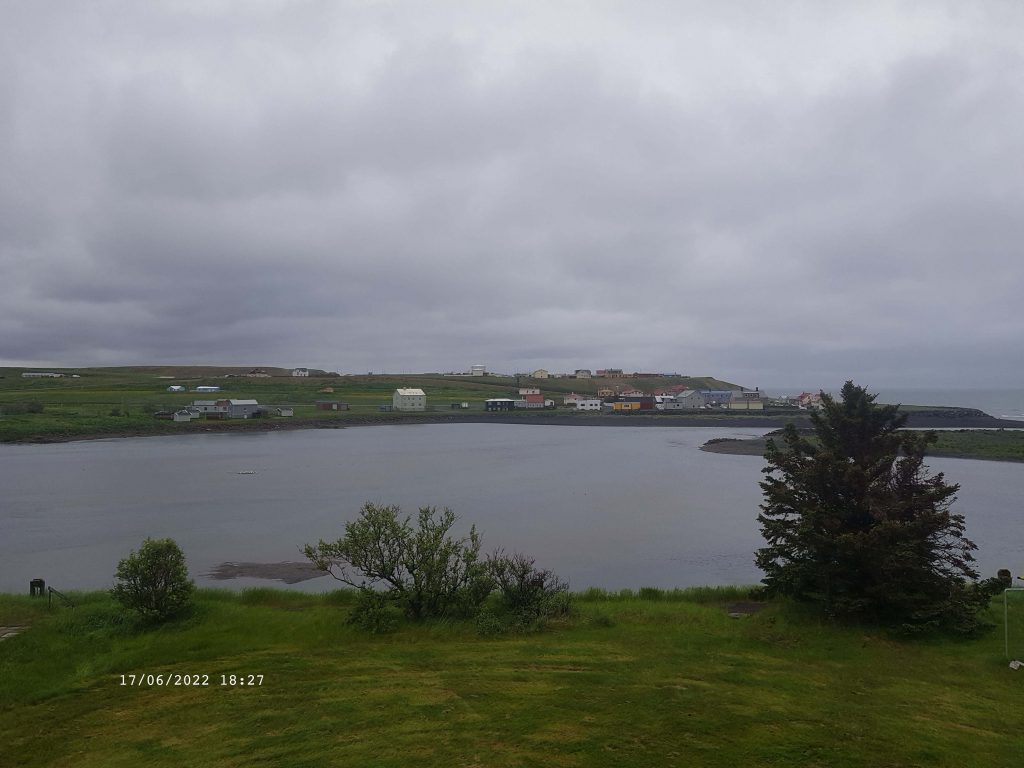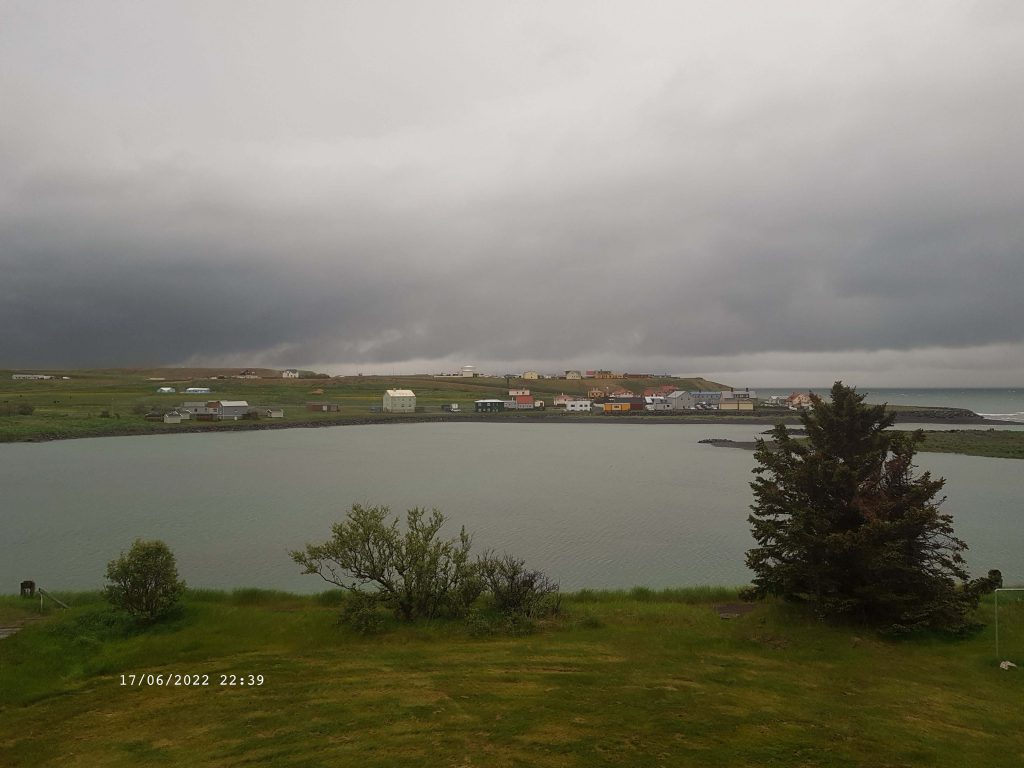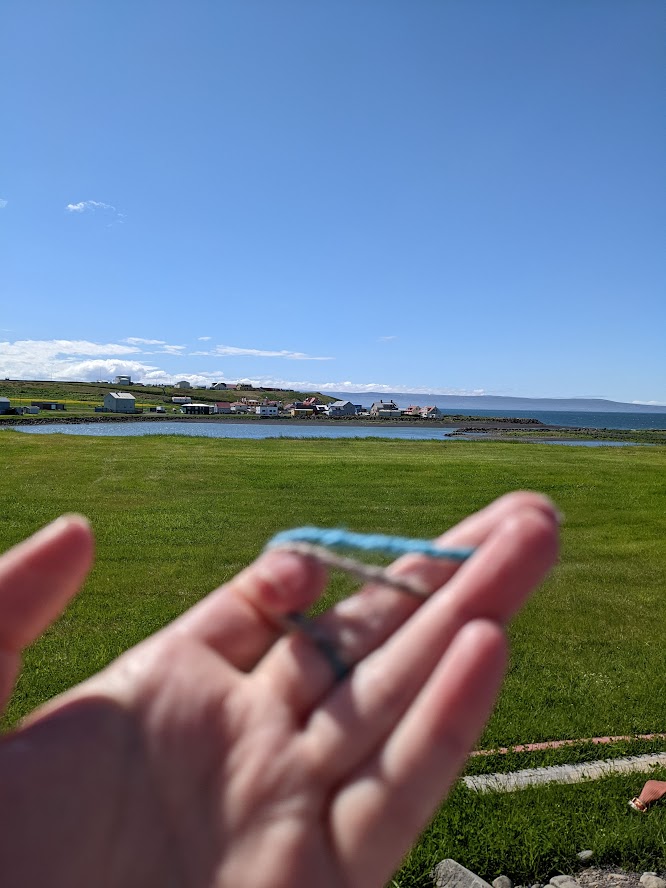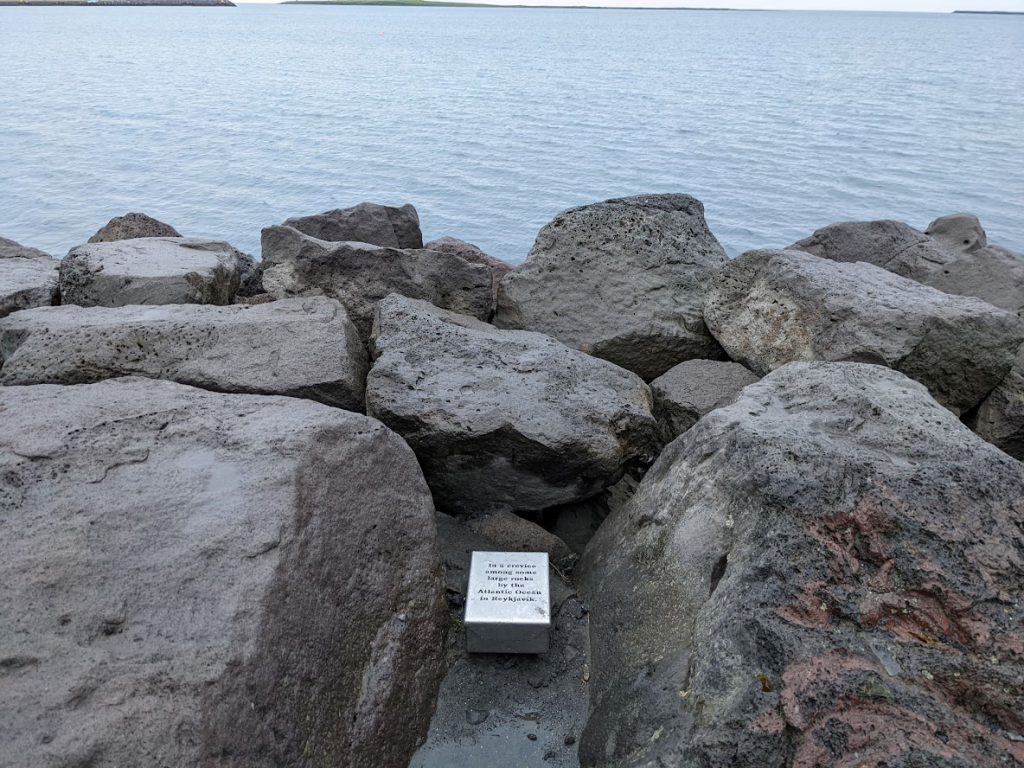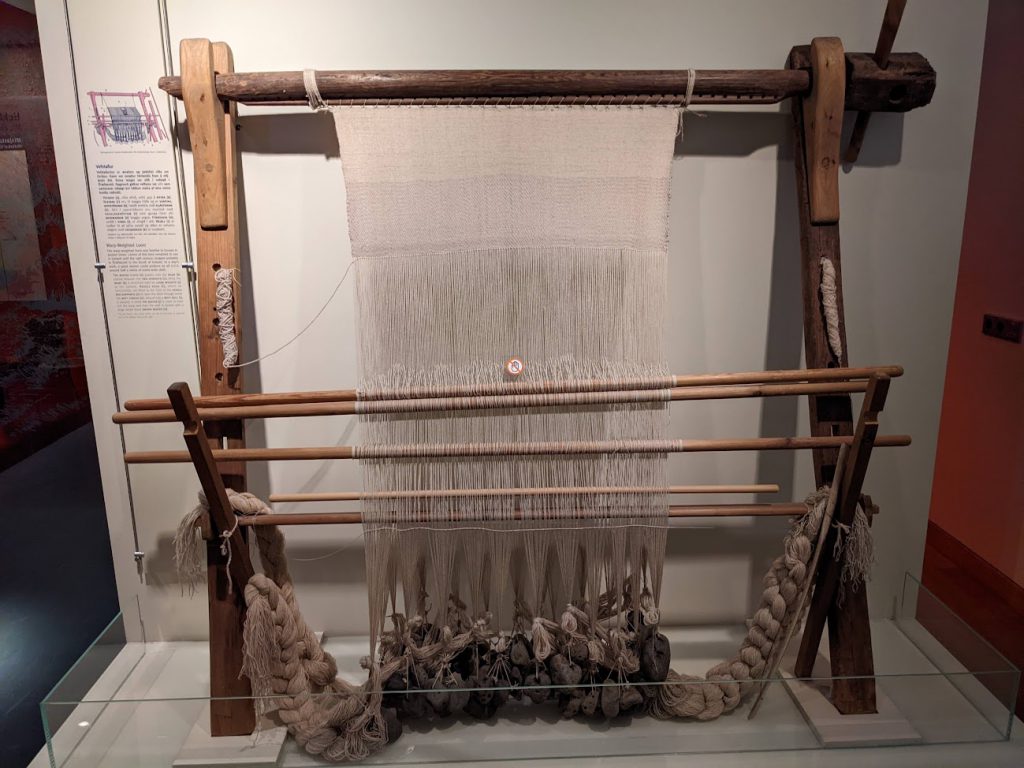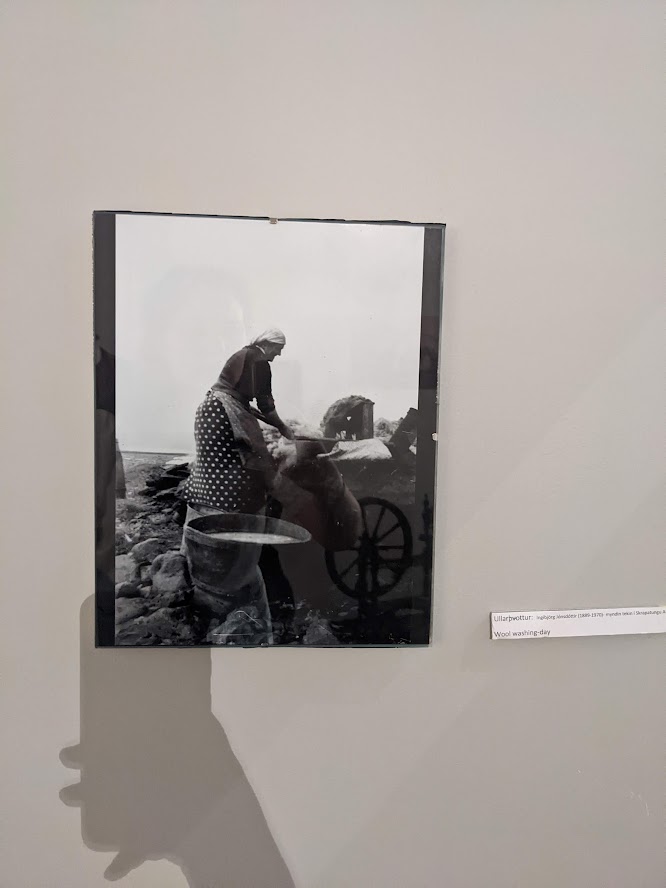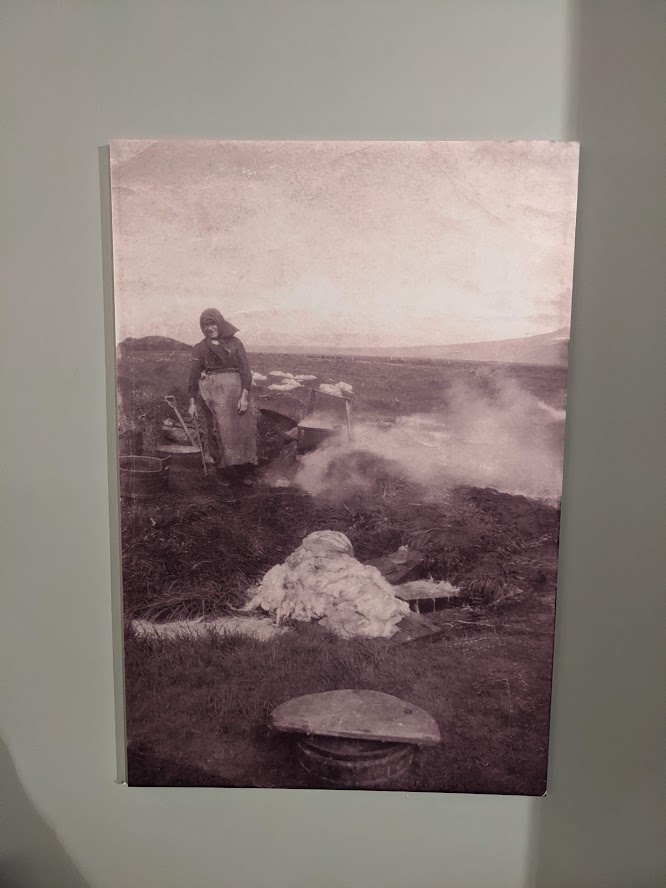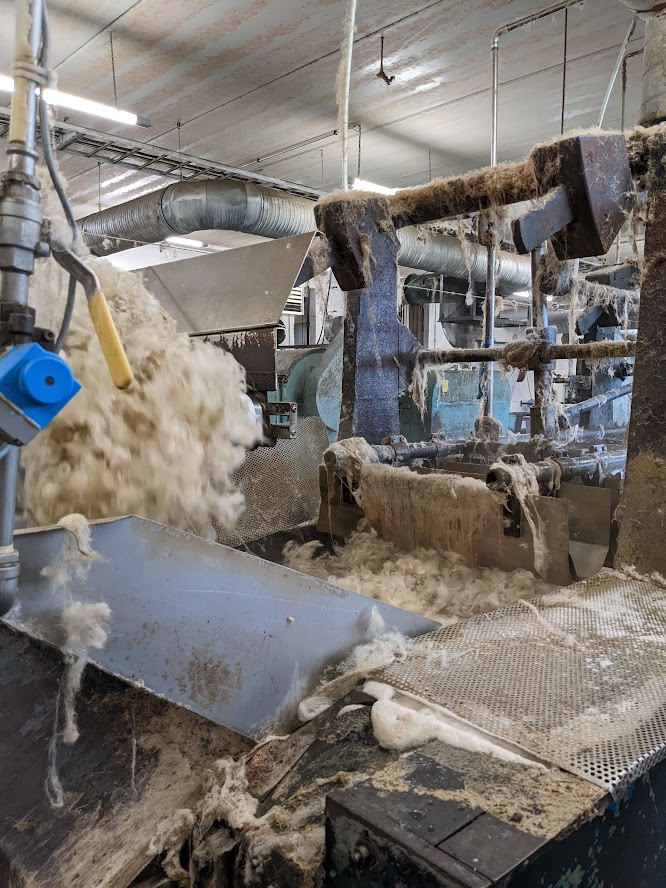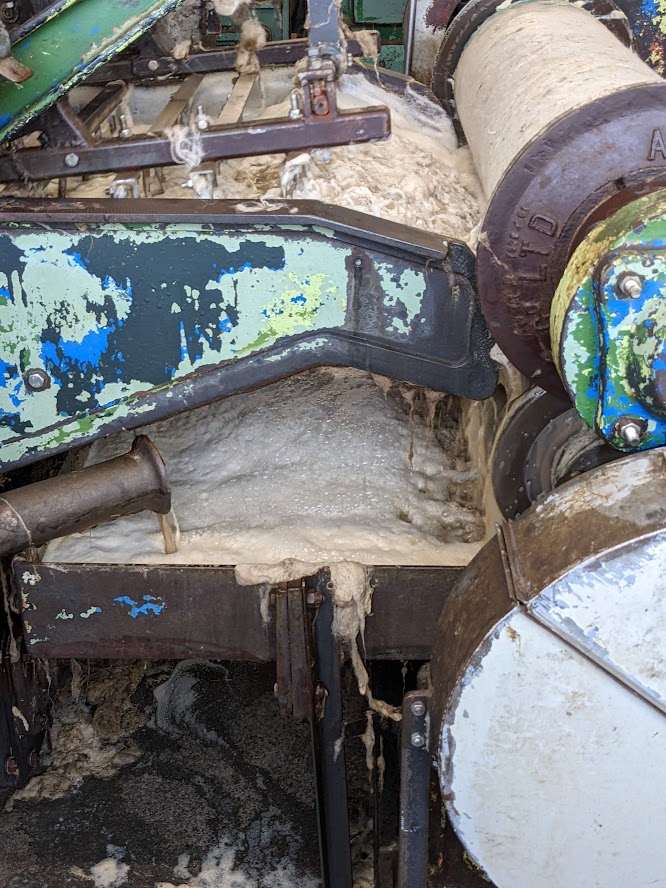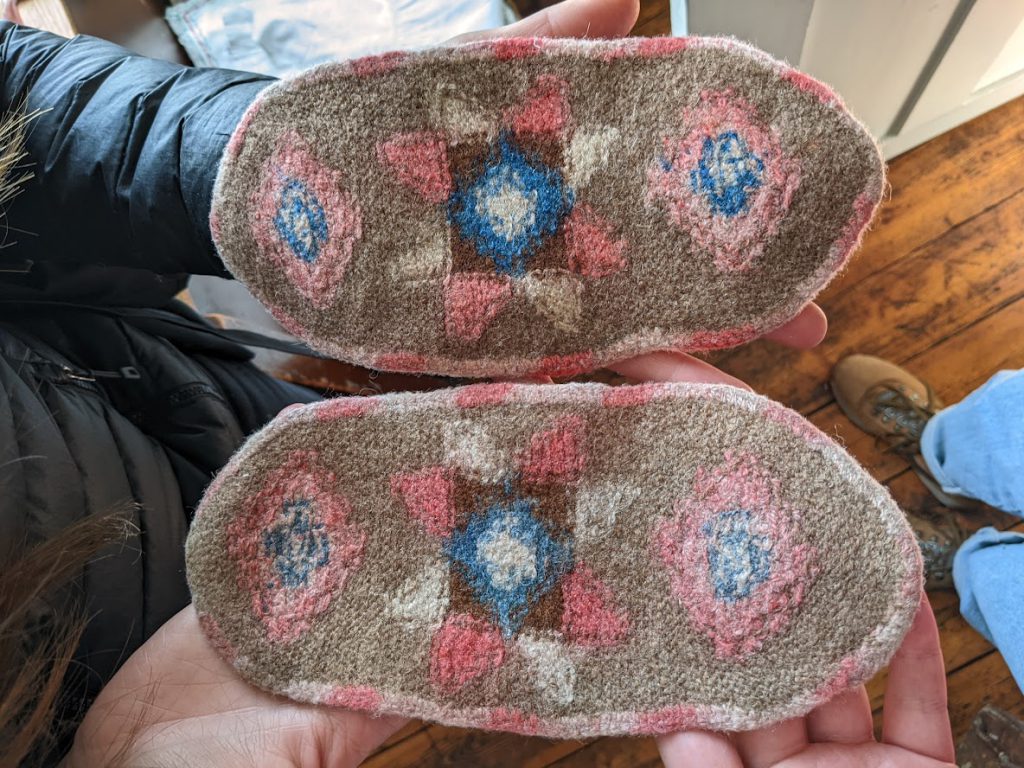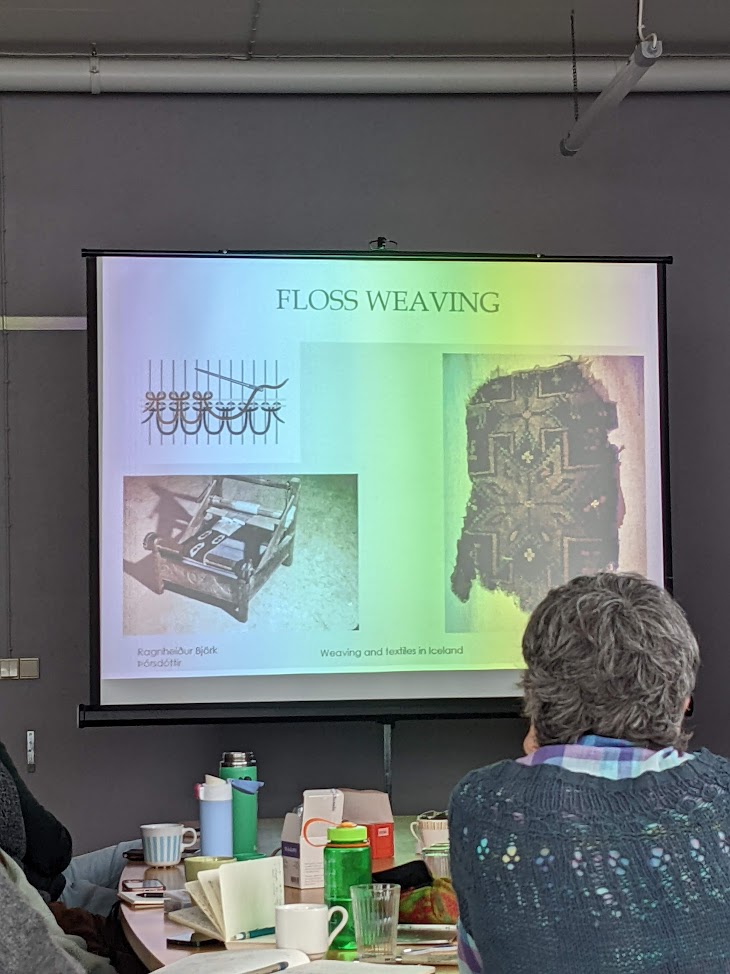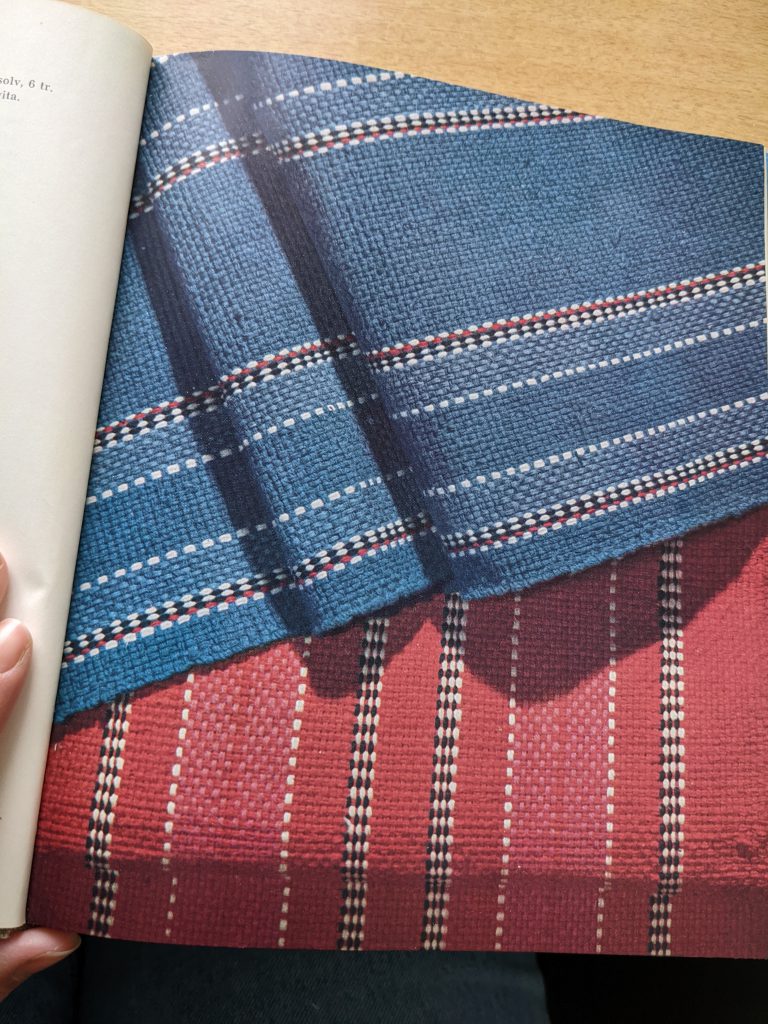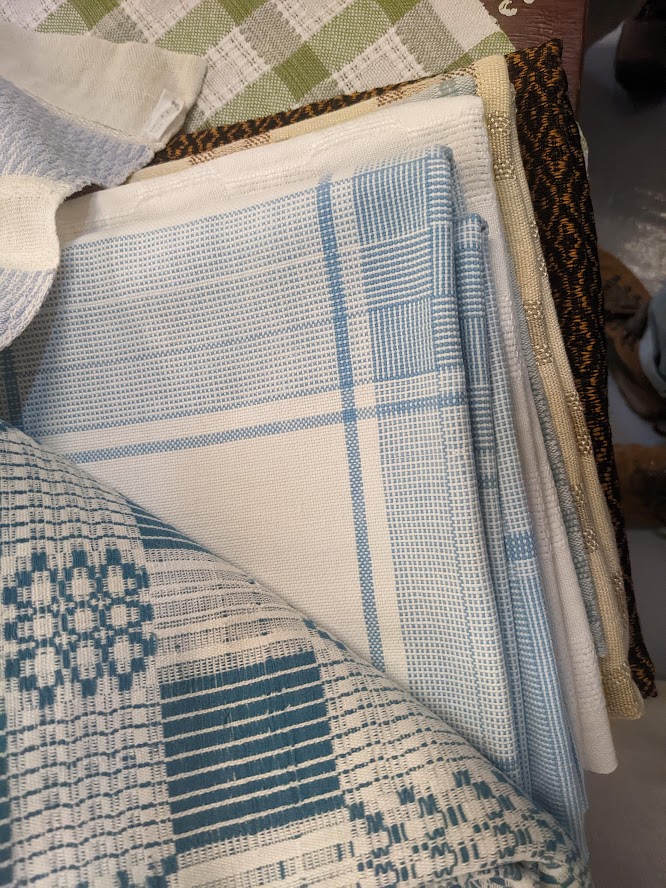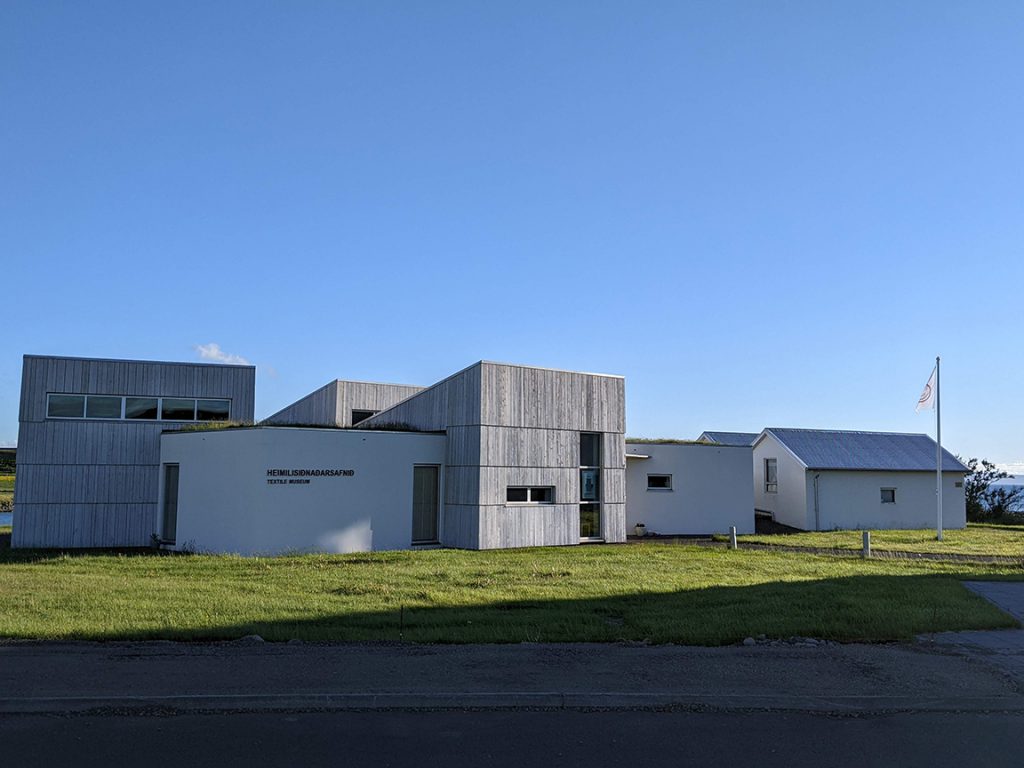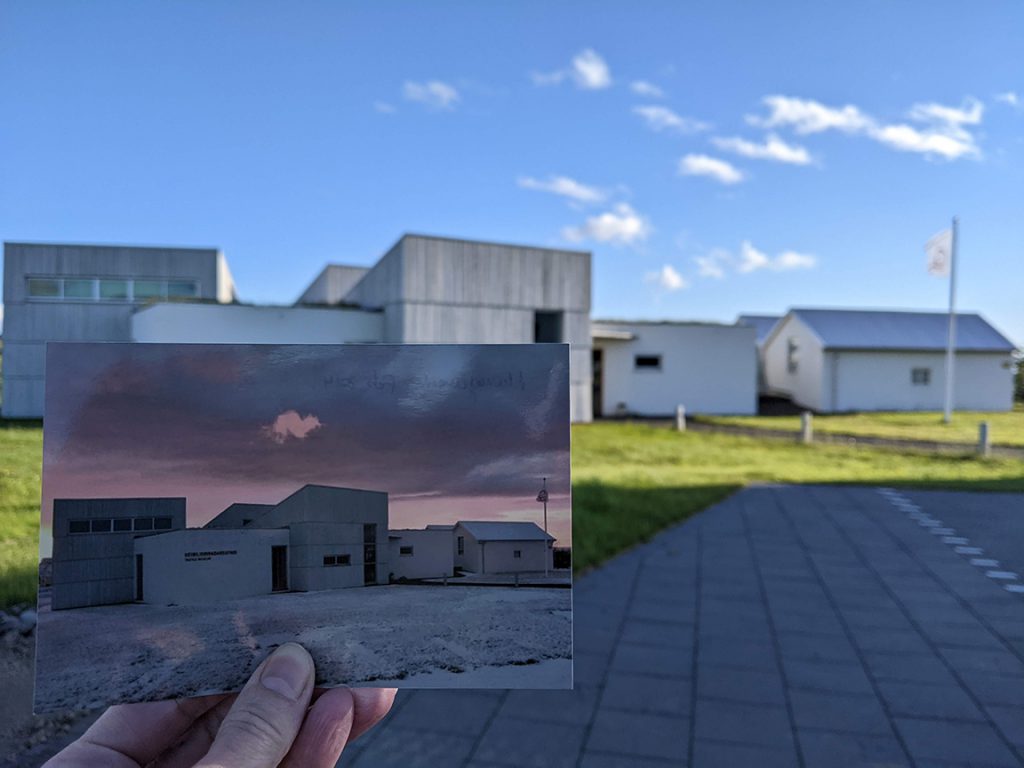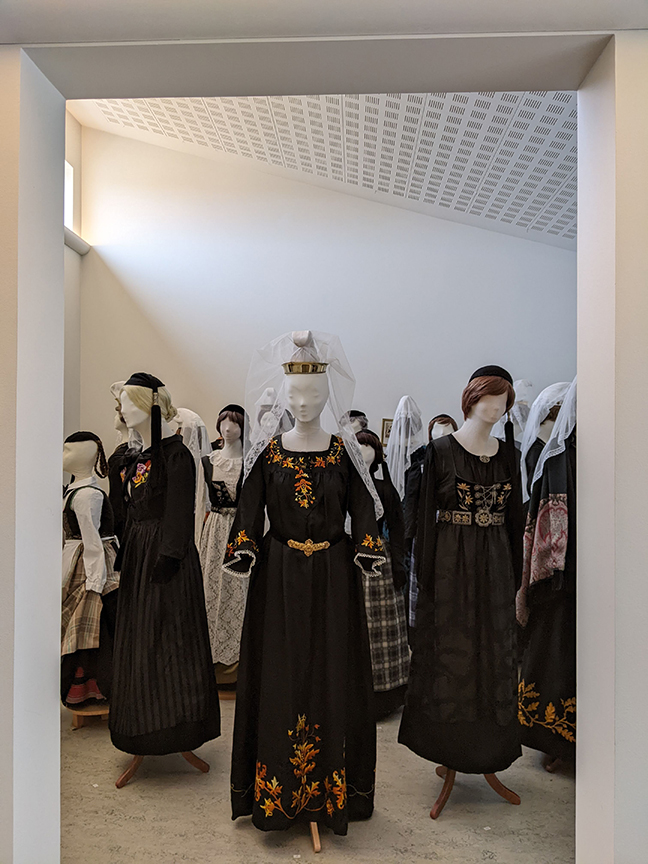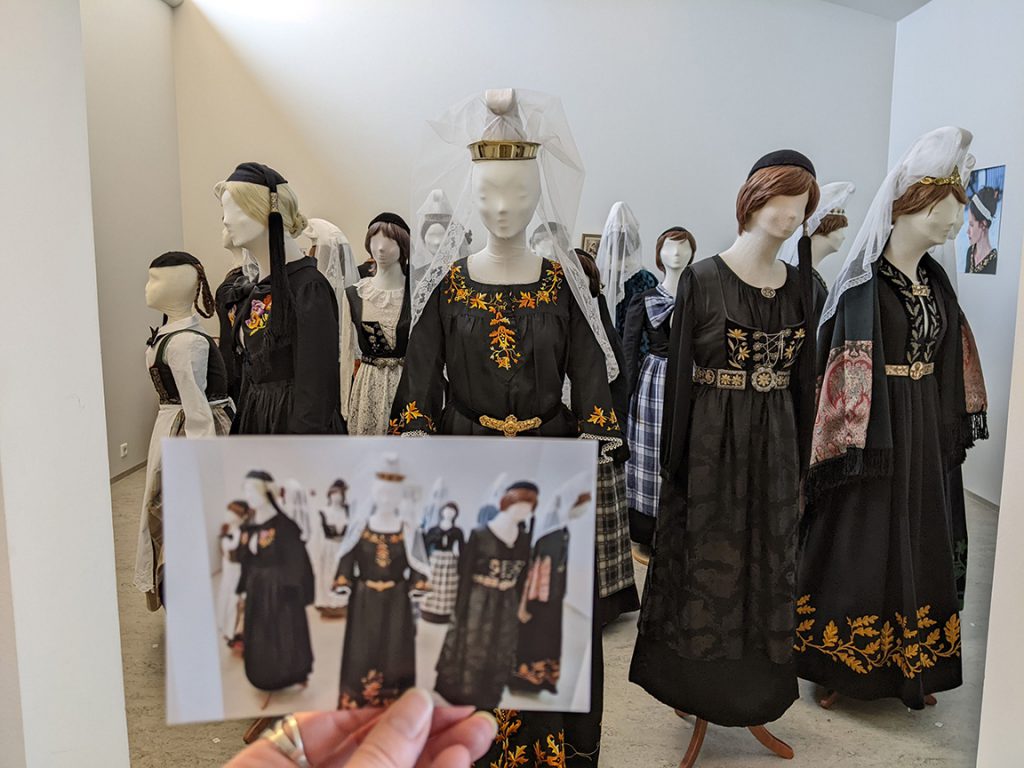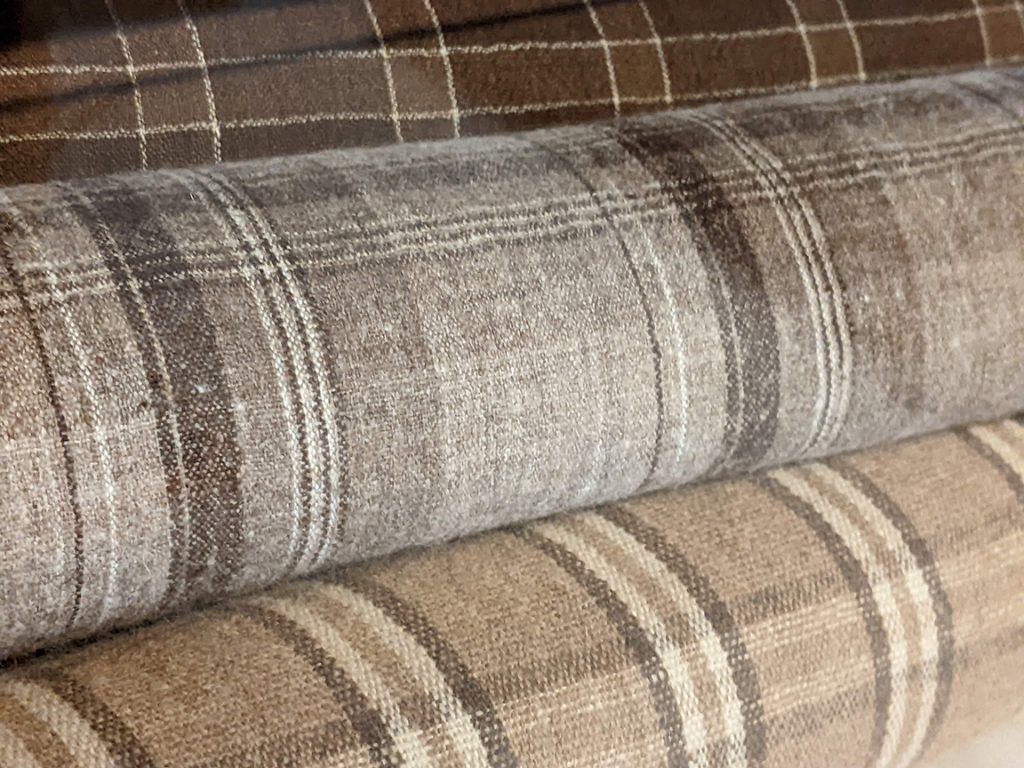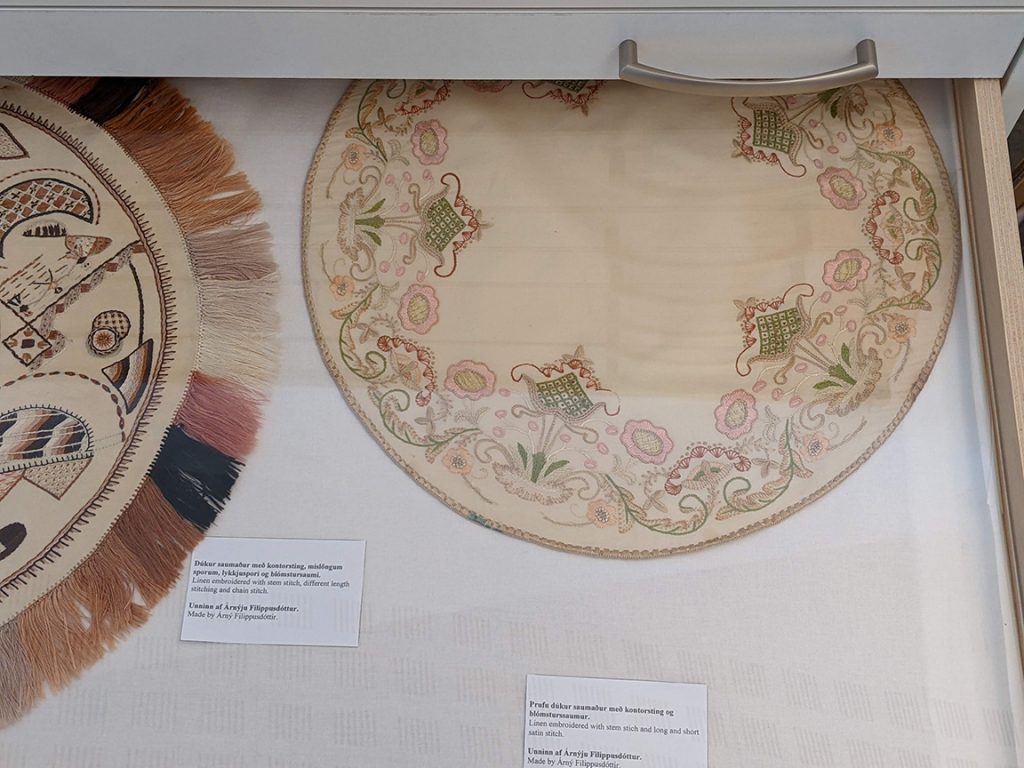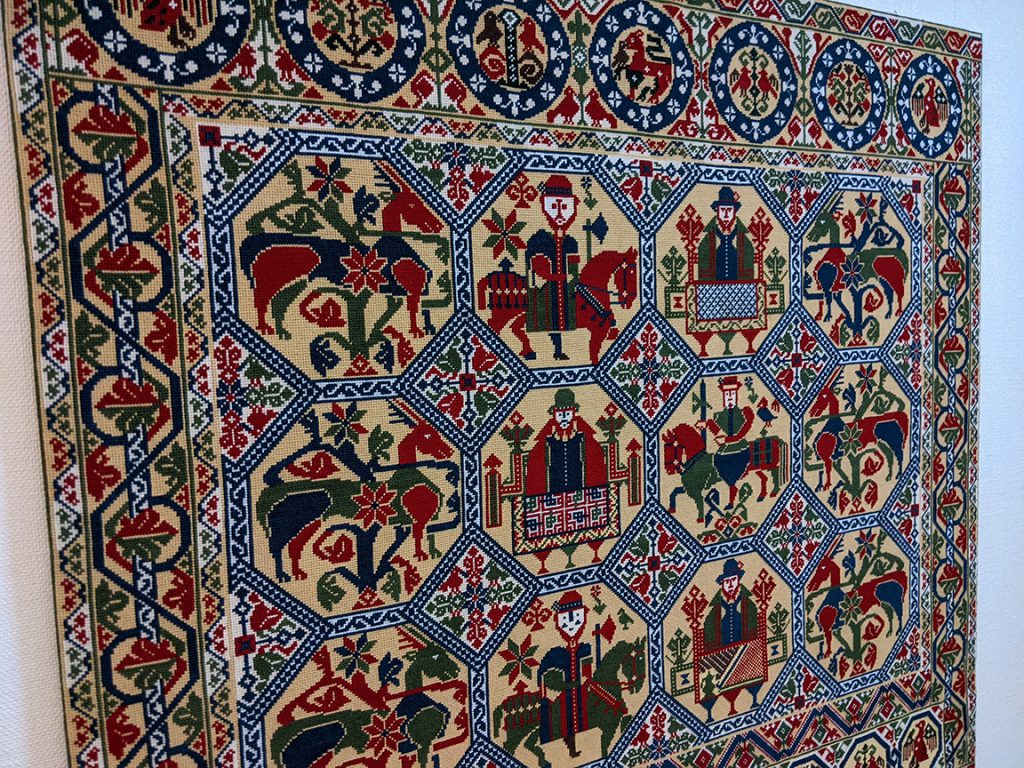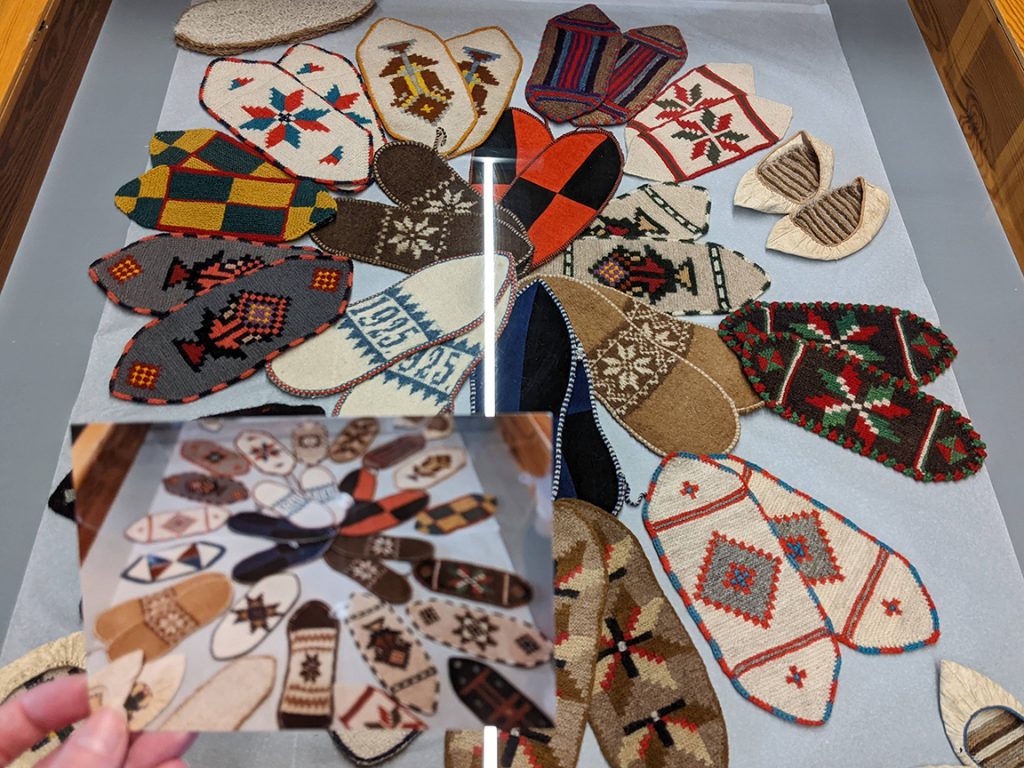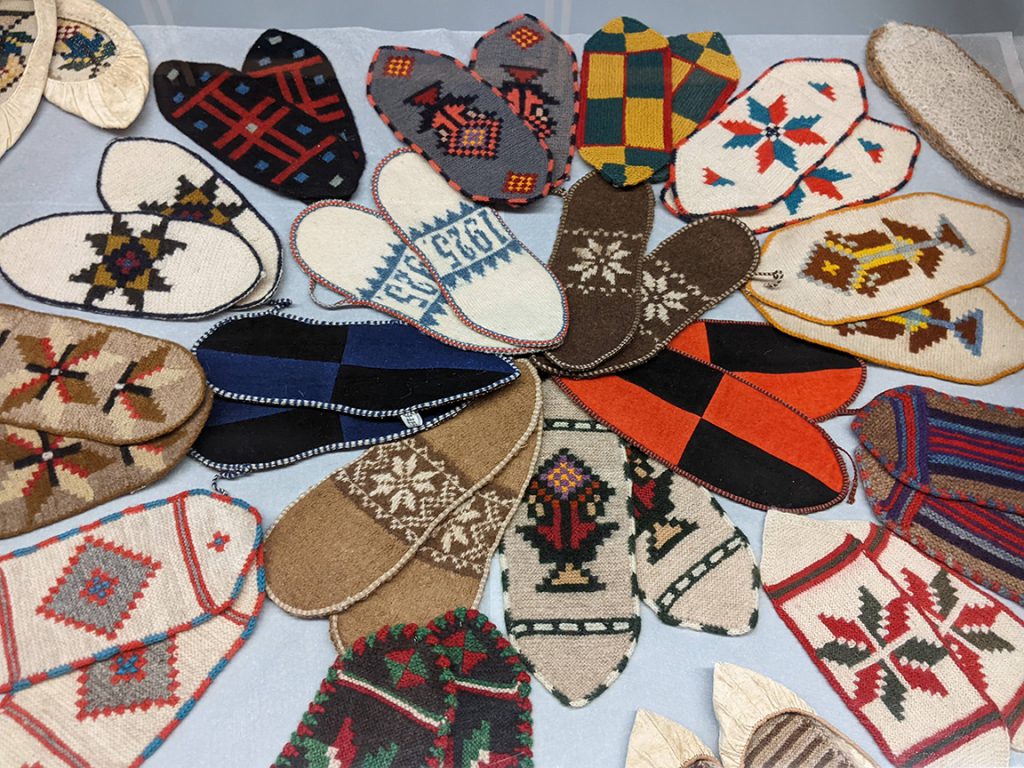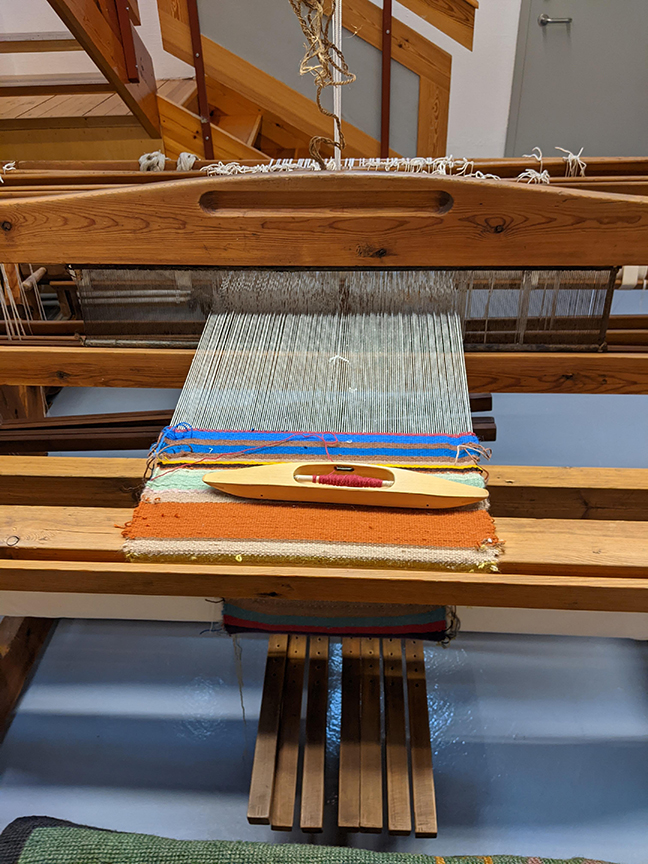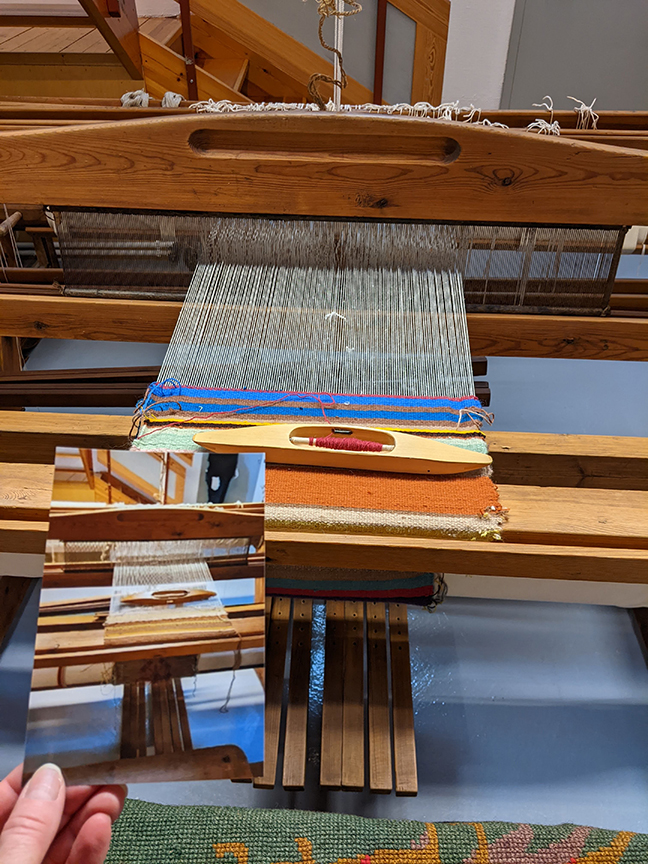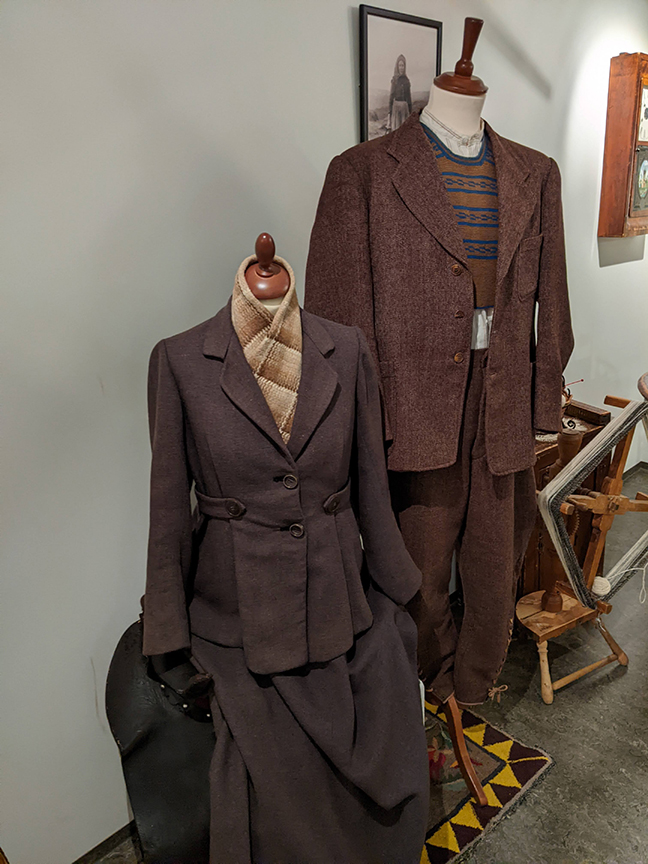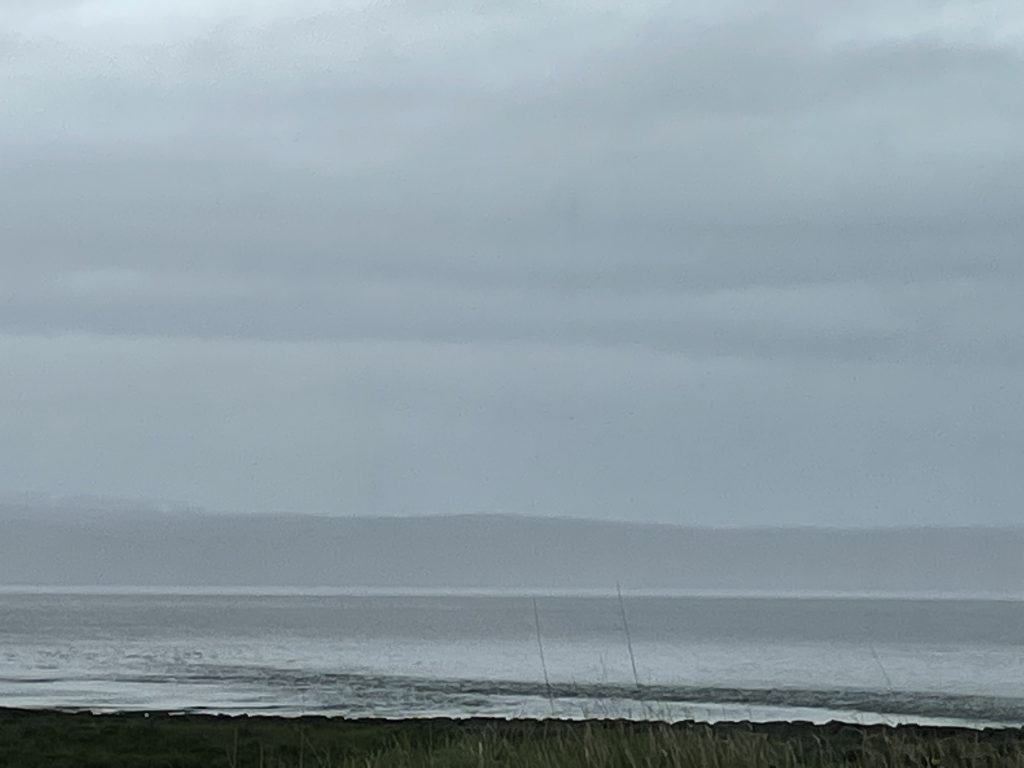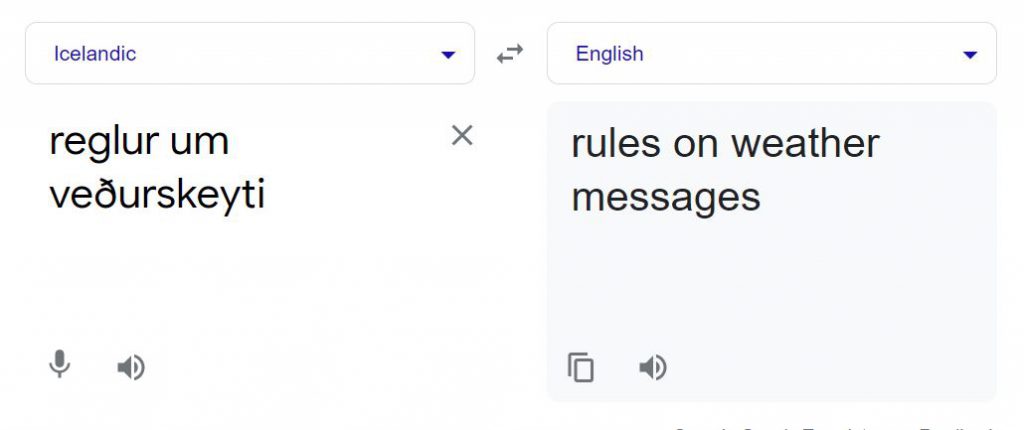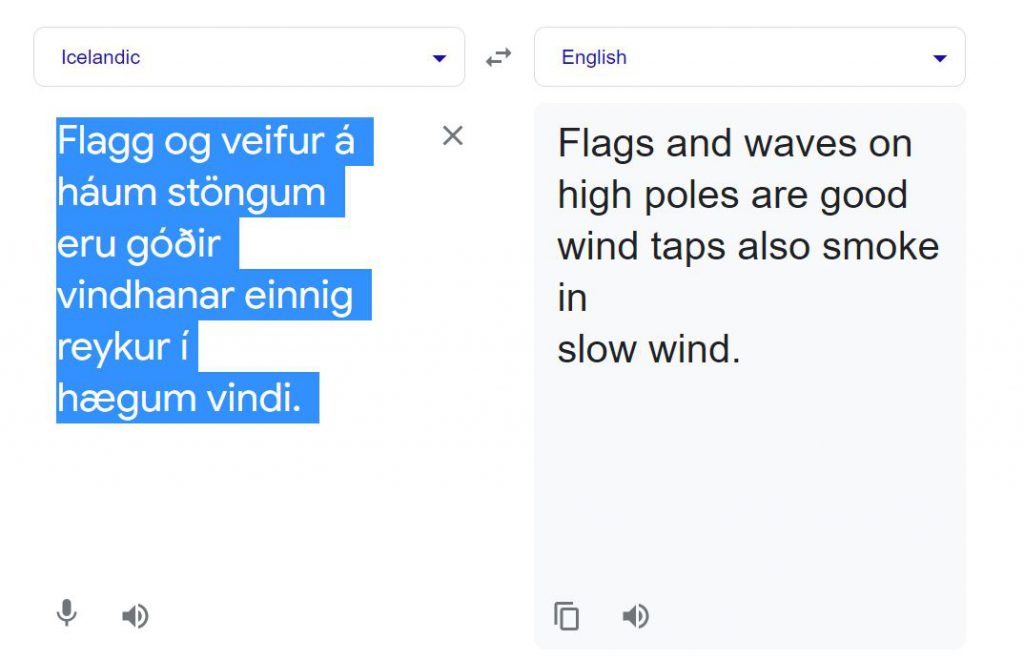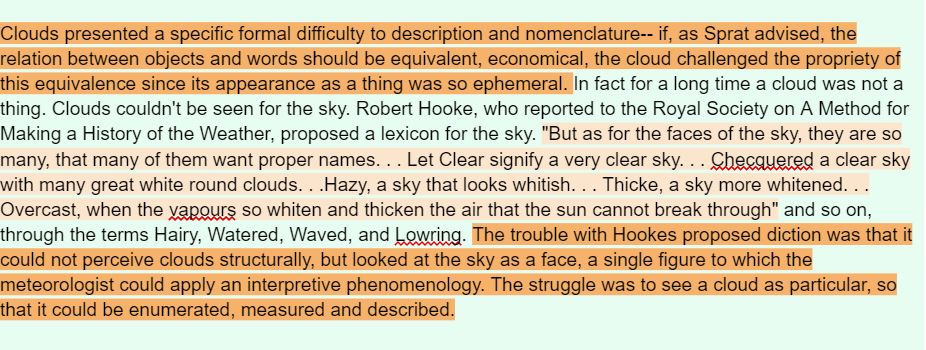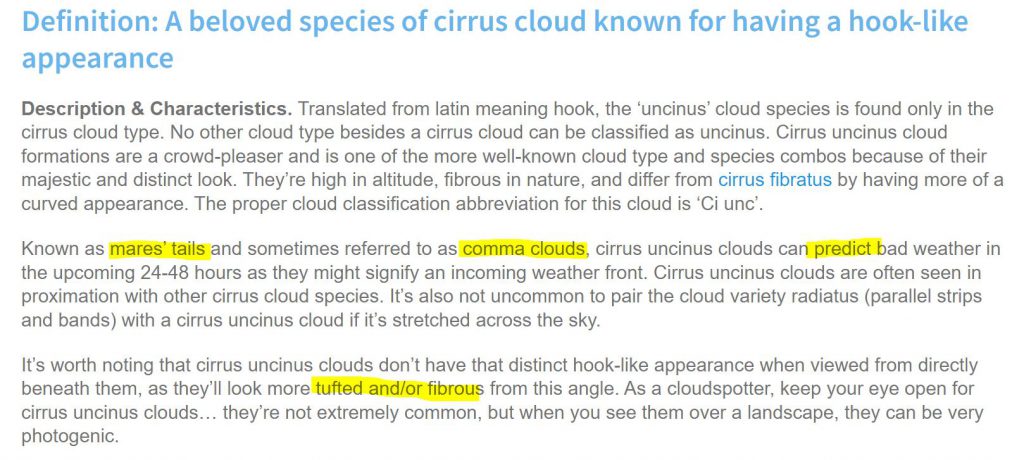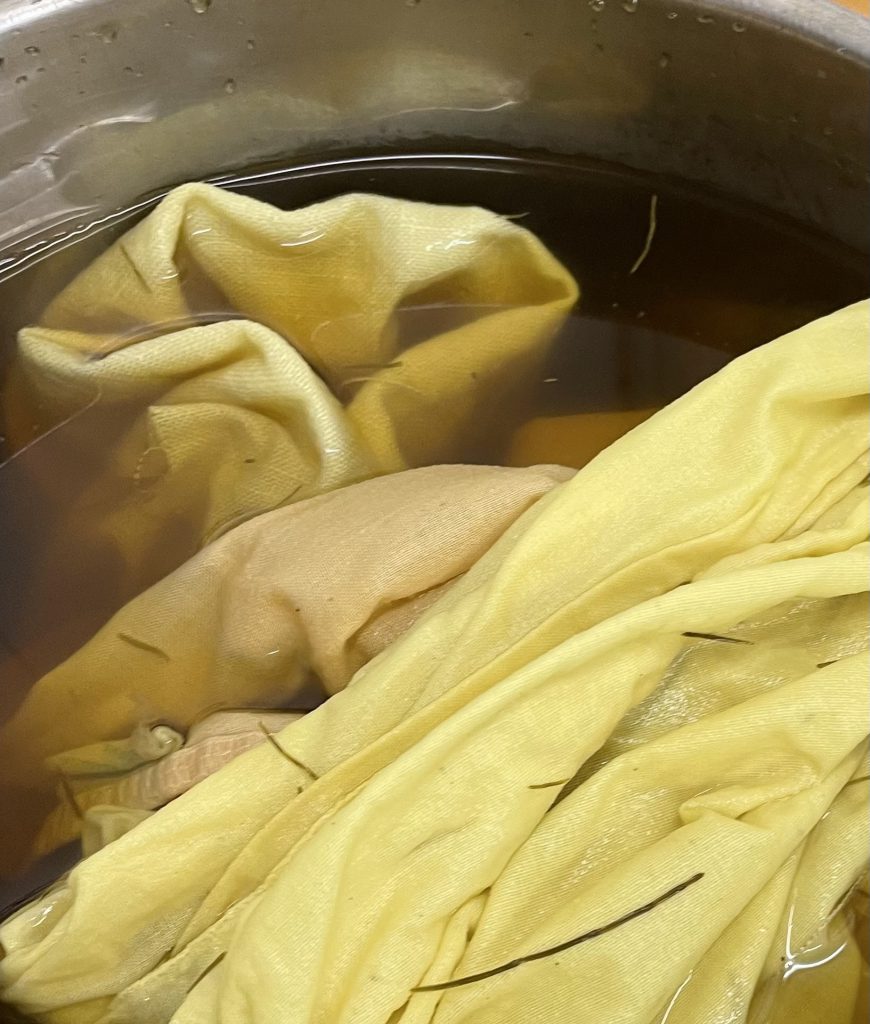We set out to find thrown away things, forgotten duds.
We looked for lost remnants, known to some as garbage. We were happy to fill up bags for an afternoon out of the studio. Looking for detritus and finding inspiration all around.
Blönduós is an orderly town. Still, some garbage lurks in the cracks, windswept under bushes, or in the most tucked away of crevices. So we looked and peered on.
At first, we found mostly horses. Greeting us, cheering us on with snuffs and gurgles. I wished I could fit one in my bag and carry it around with me, if only for the afternoon.
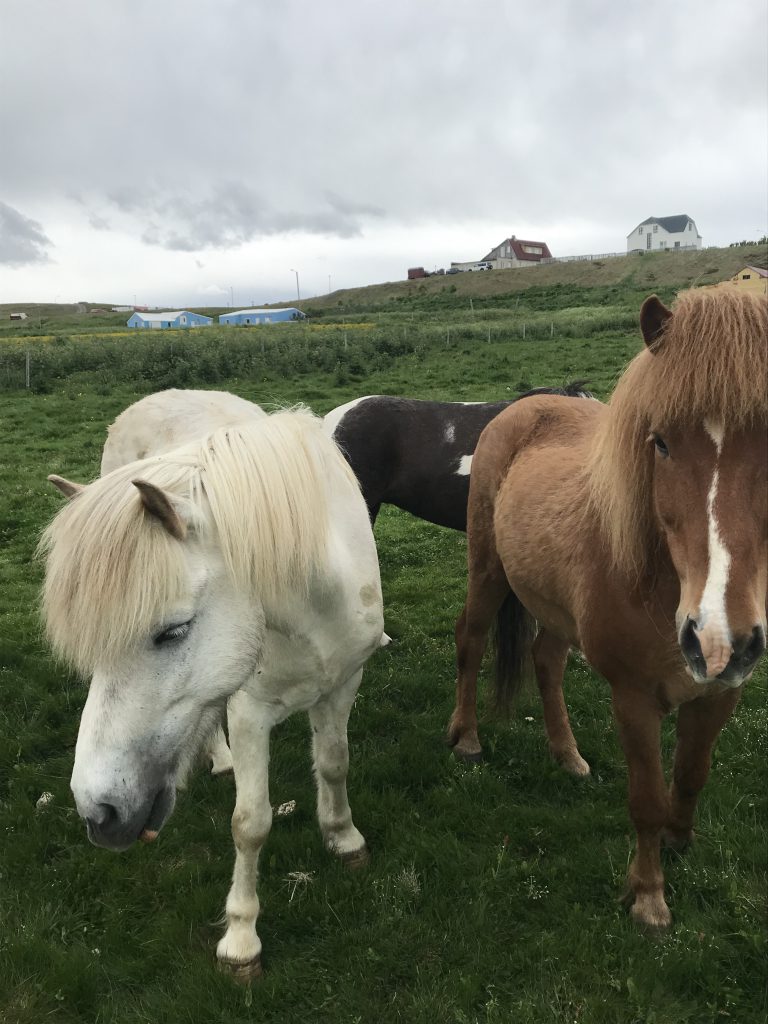
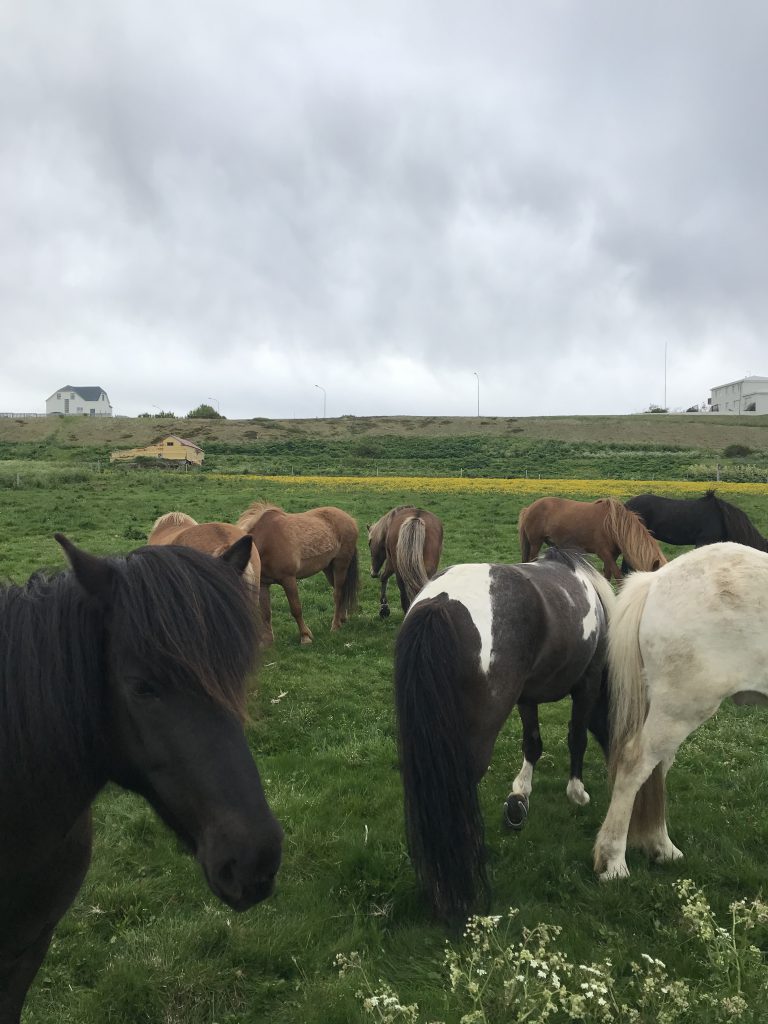
Continuing on, our bounty was cigarette butts, water bottle caps, and stray garbage bags with rhubarb growing every which way.
Pitter patter, continuing our steps as the rain sprinkled on and off.
Thinking about colours and footsteps and what is left behind.
Baring witness to the resilience of plants growing in the least fertile of places. The same spots where garbage loiters. I wonder if the plants mind their occasional debris companions, fluttery as they may be.
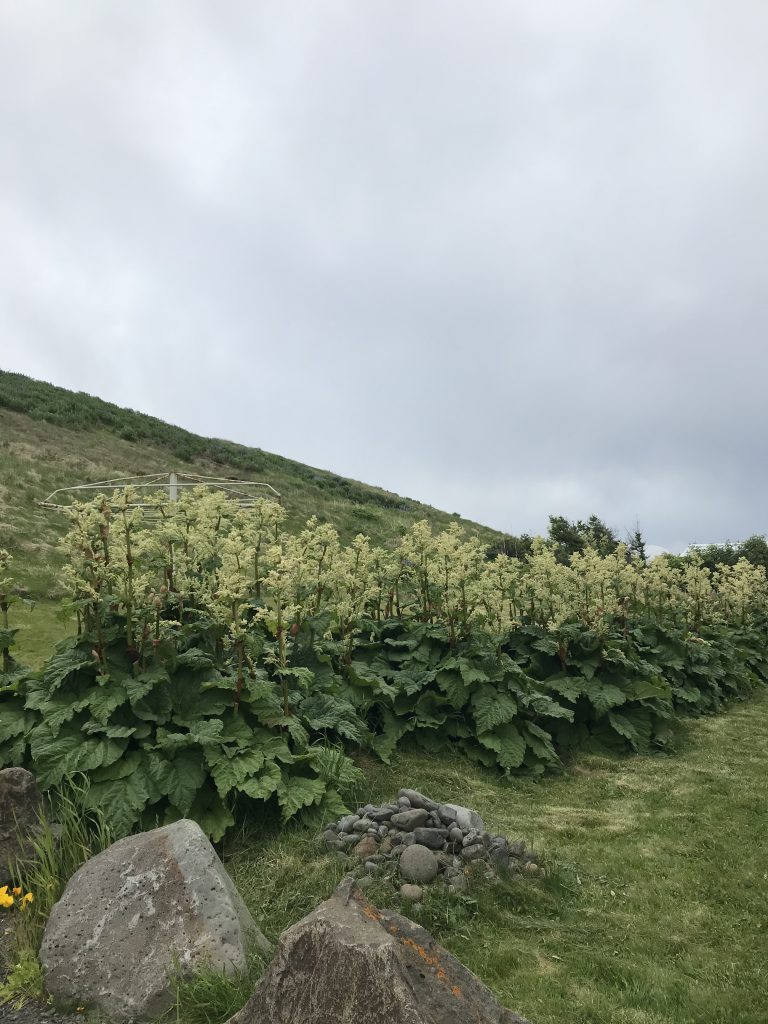
Wandering with our noses gravel-bound and squinting eyes. A pause to look at our surroundings and we were at the steps of a church where an old brass door hung ajar. Colour, magic, and reverence awaited us when we were looking for discarded things.
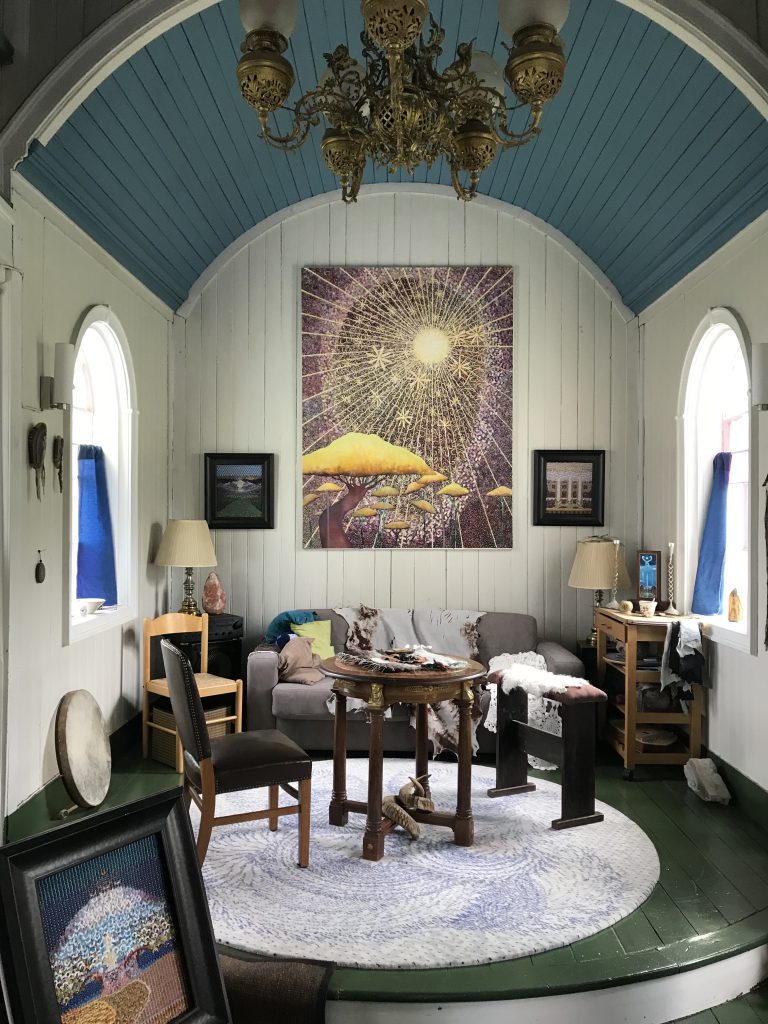
Standing before us, an artists dwelling nestled within a spirited structure. A magnetic pull. Inconspicuously tucked next to a mossy hill in a sea-coloured church. The home of a warm welcoming artist, Reynir Katrínar, who weaves tapestries of trees, dries herbs, makes paintings, and grows strawberries in his rainbow windowsill among other things. A rich life – overflowing.
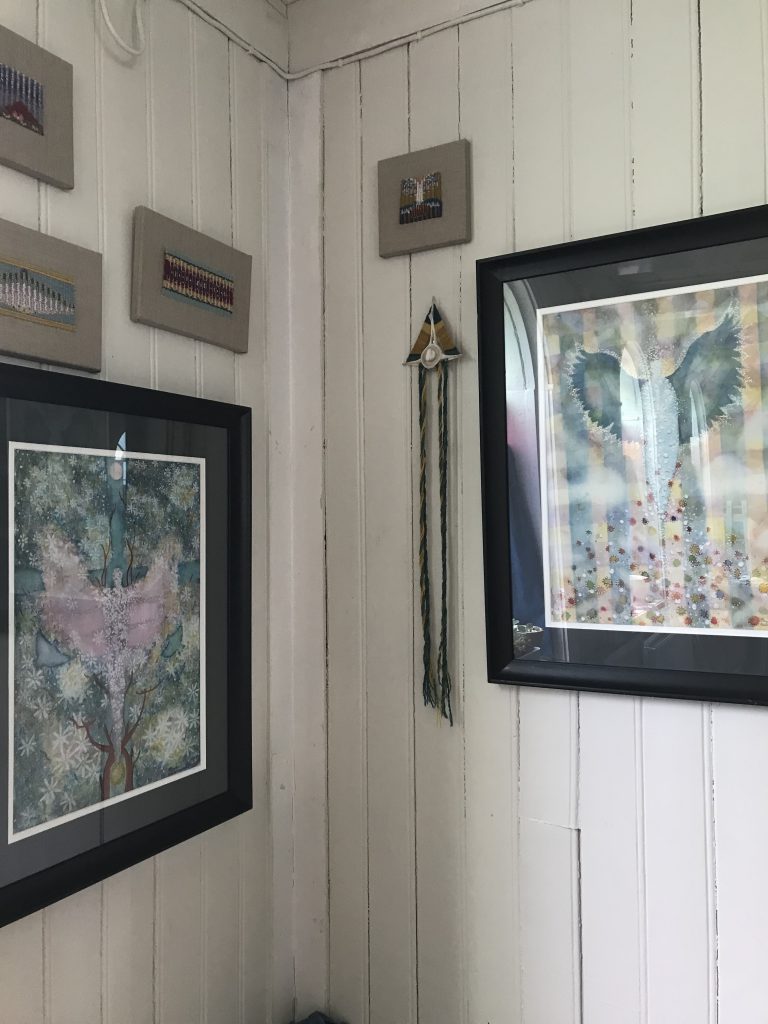
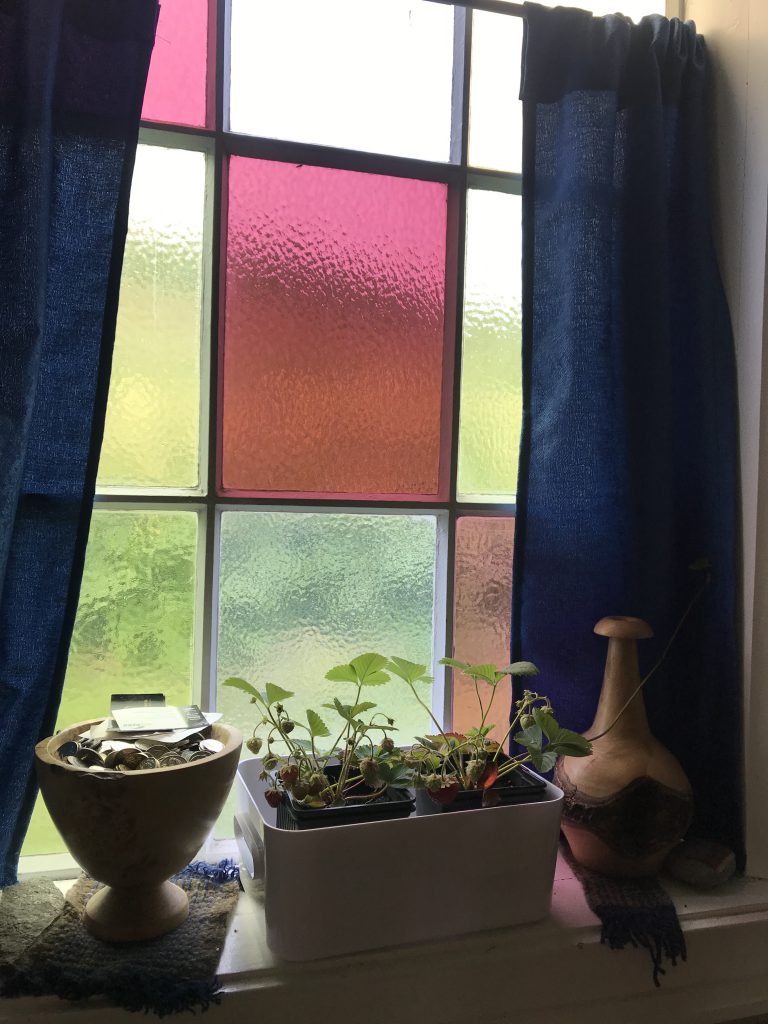

To linger there forever crossed my mind. Courteously, we continued on with gratitude for the unexpected welcome and quench of inspiration. out in the elements we went. Rain rain, ever so gently. Onwards to the destination that inspired this outing. A pathway tucked between the beach and the hill’s slope. A destination destined for rubage.
Garbage-bound. We set ahead on our pursuit.
The entire way, we had a trustee companion by our side – Cat.
We managed to fill two large garbage bags with debris in just a short jaunt. The rain started to barrel down on us and the wind intensified.

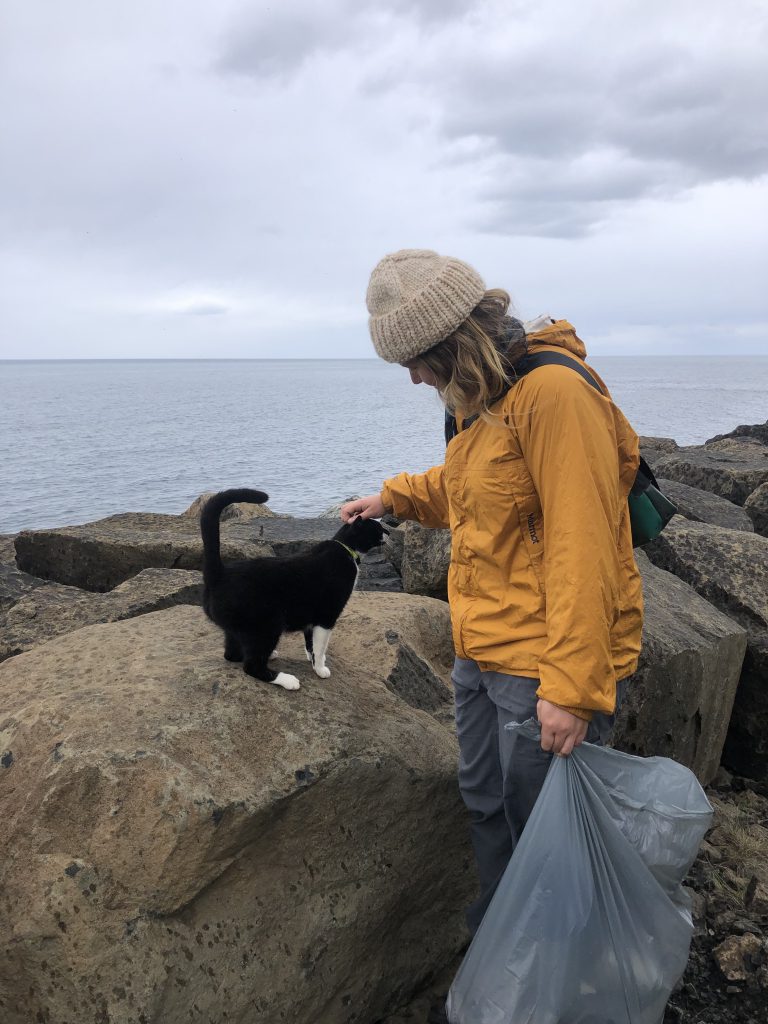
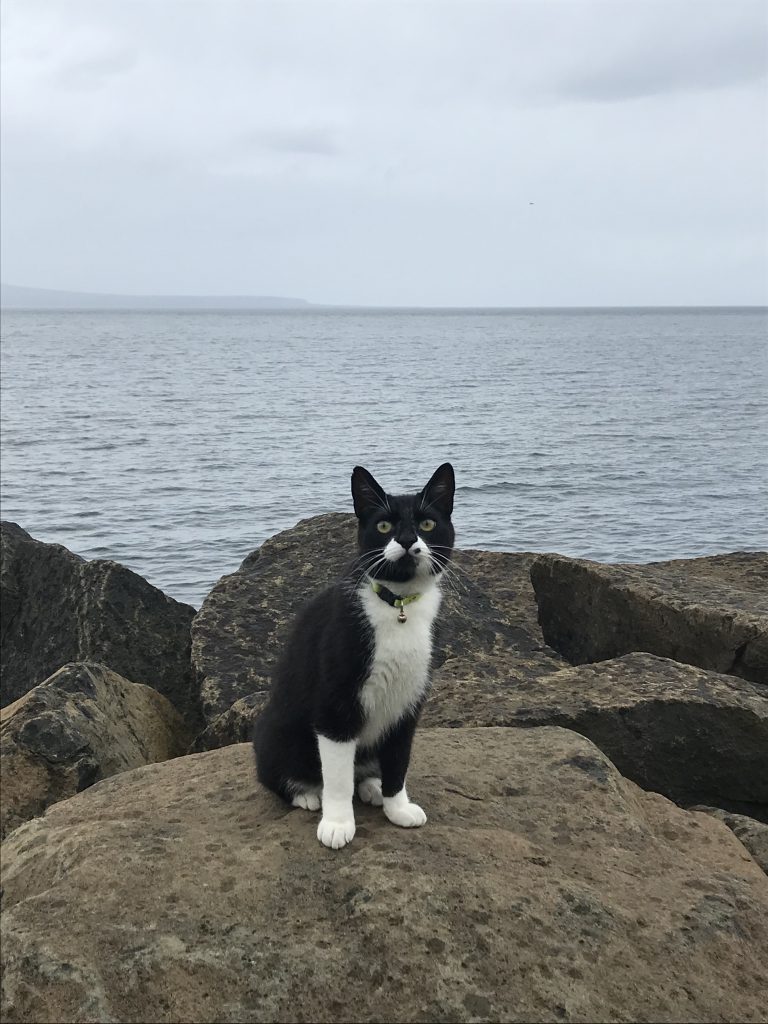
It was challenging to say farewell to this creature who so valiantly led us and saw our efforts through. Teddy, Cat and I meandered together for over an hour.
Bittersweet and gleeful, we trod our path home, bidding farewell and leaving Cat by the sea. Clad with two heavy bags and an armful of drenched cardboard boxed, we set forth. With an oncoming storm brewing, we were misted by arctic winds looking perfectly foolish to parsers-by as our mystical bags of garbage-harvest flapped in the wind.
We took pause to pick a Lupin bouquet to enliven our nest once we got home.
A spiralling day this was. Something about setting out to find garbage and encountering a heard of horses, hardy plants, an artist’s nest, and a sprightly cat guide is utterly fortuitous.
We also found garbage.
This world houses debris all about. Sometimes I do not have the heart to look around me. It is often lonesome and disheartening to witness garbage unfurling its talons . However, what I learned from this day is that when I went to look for trash, I did find it, but I also found plenty of magic. I would not have happened upon the delights of this day had I not gone out with my original intent to look for things in the deep crevices, under the twisting elms, and in the shadows. We are all here, on this earth, in this vessel. I will hold onto this knowing: musings, magic, and muck ferment in the same vessel.
with love, Julia Woldmo
